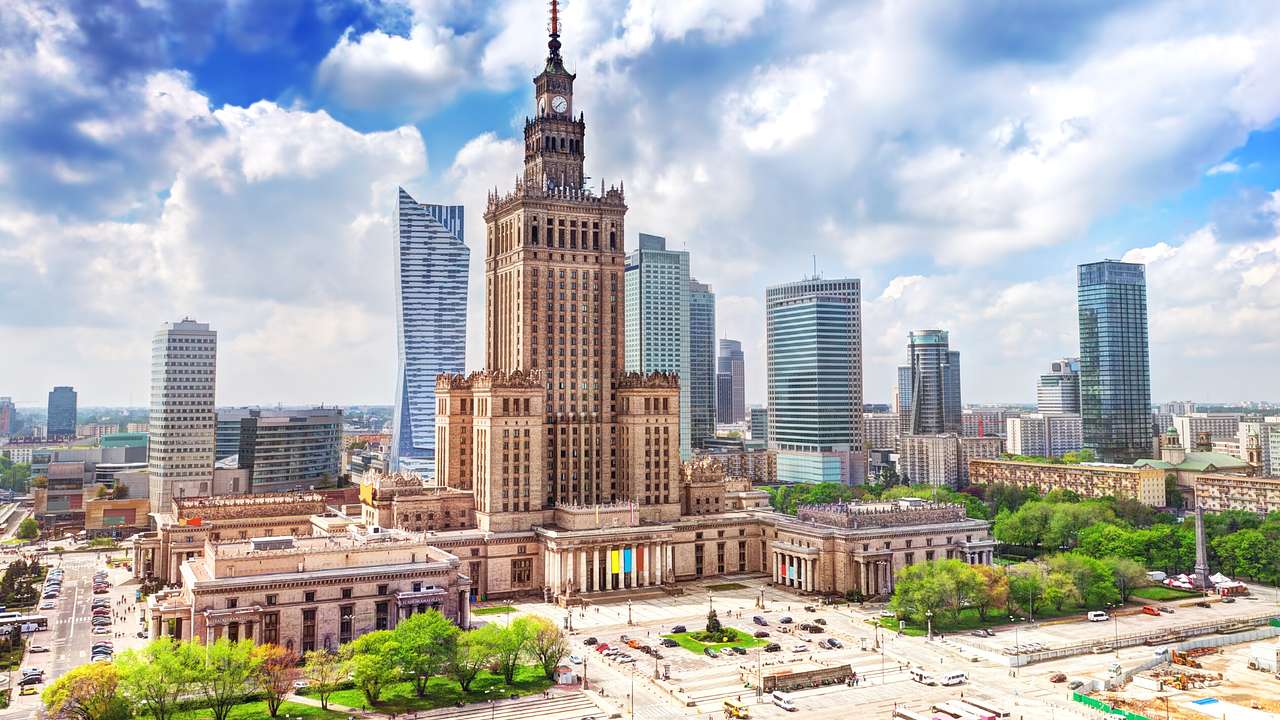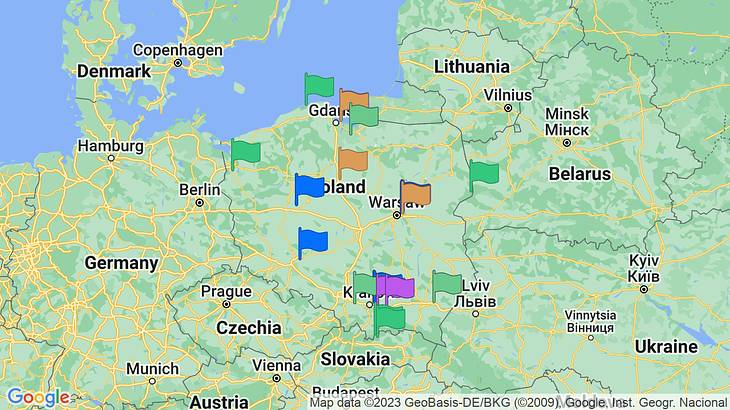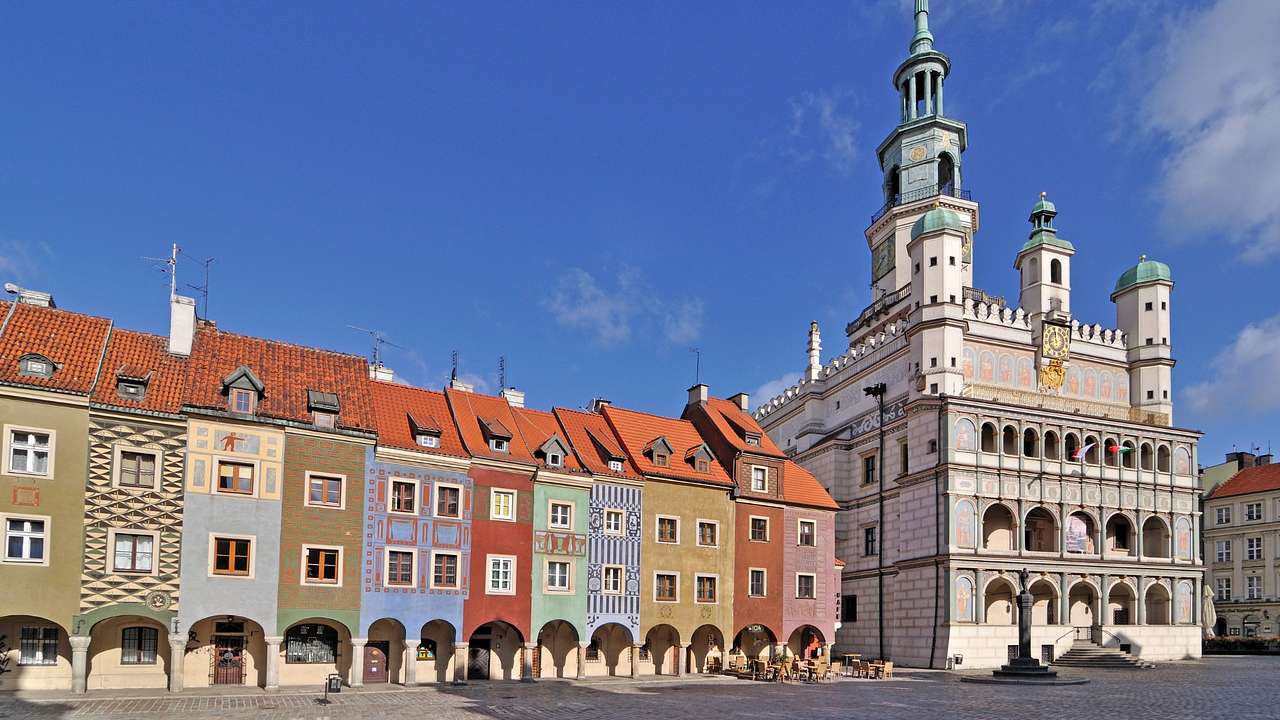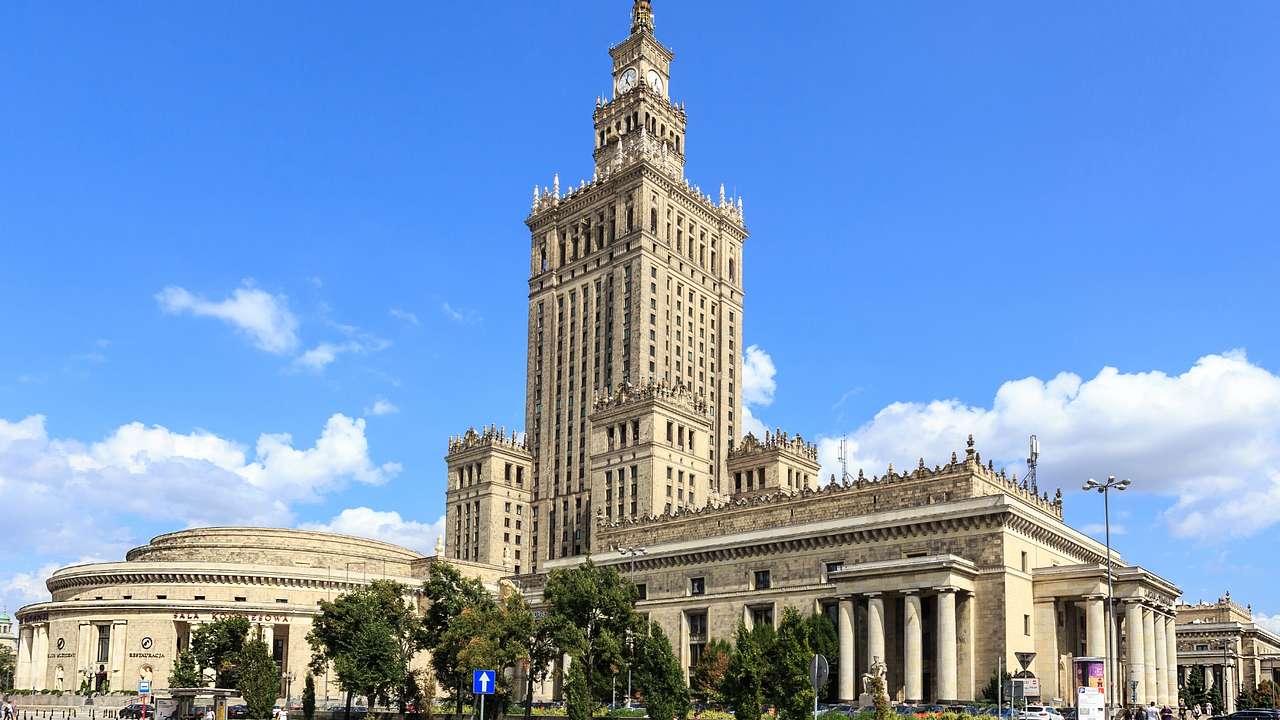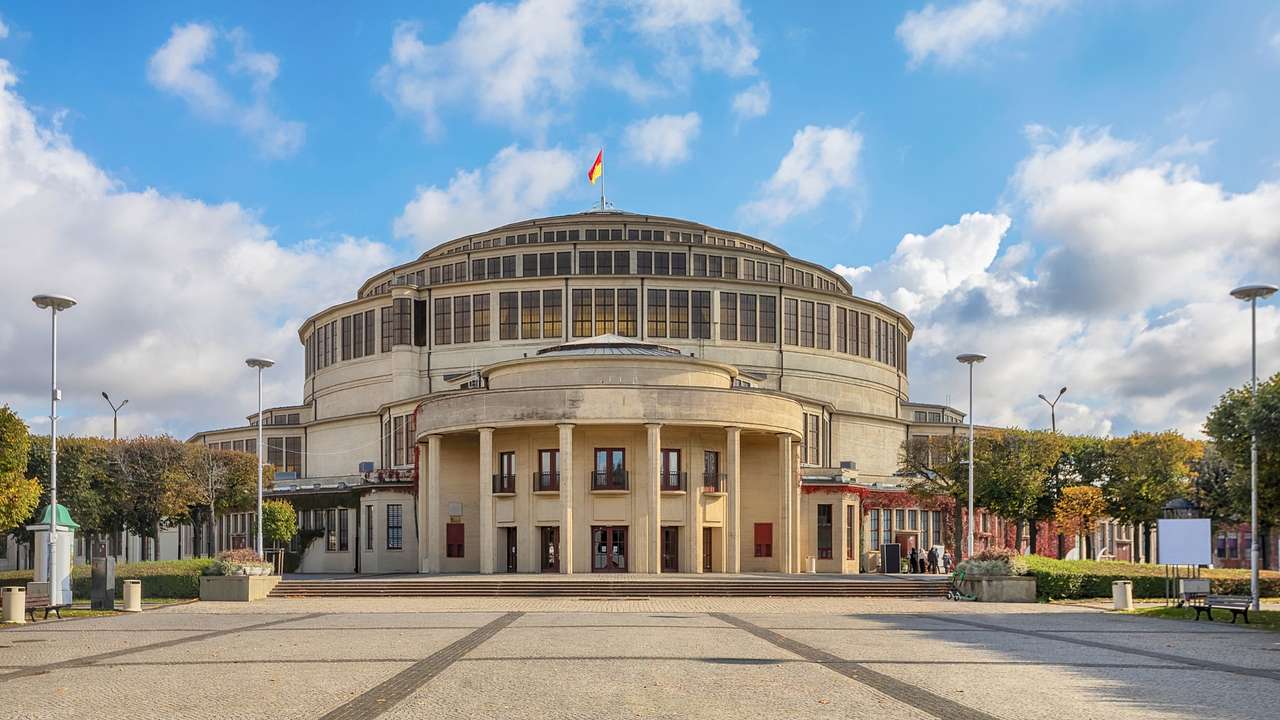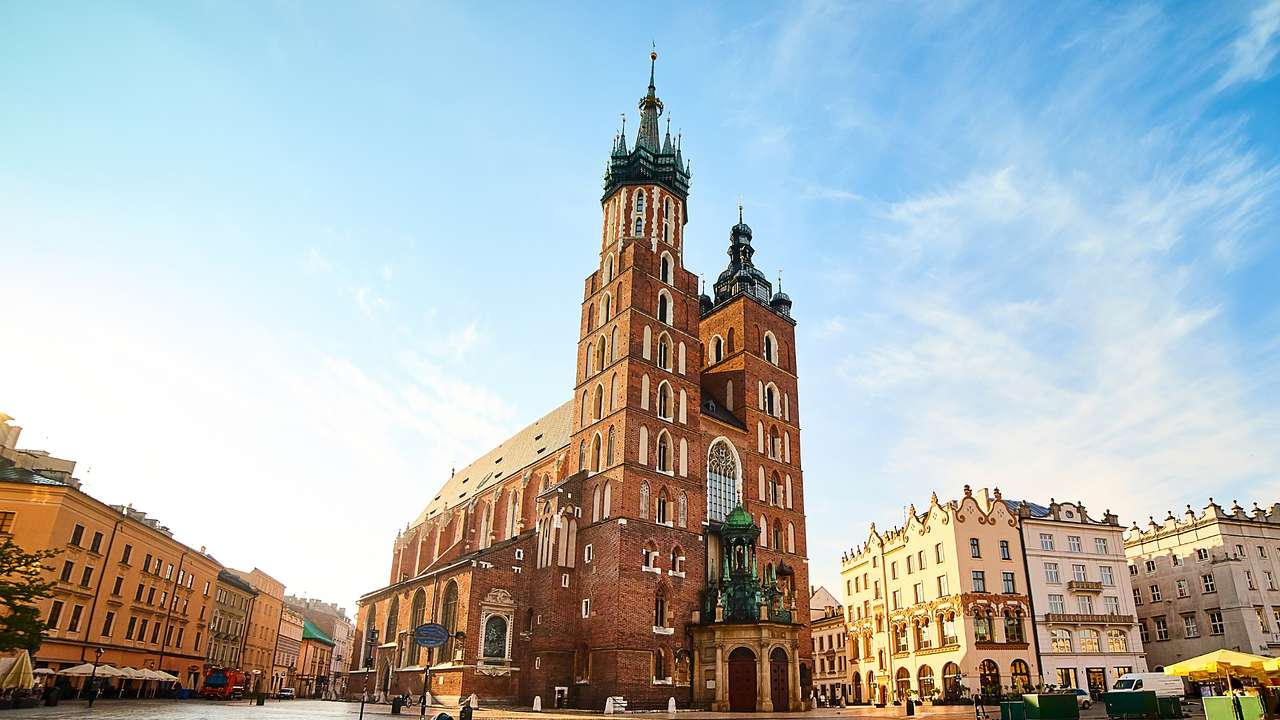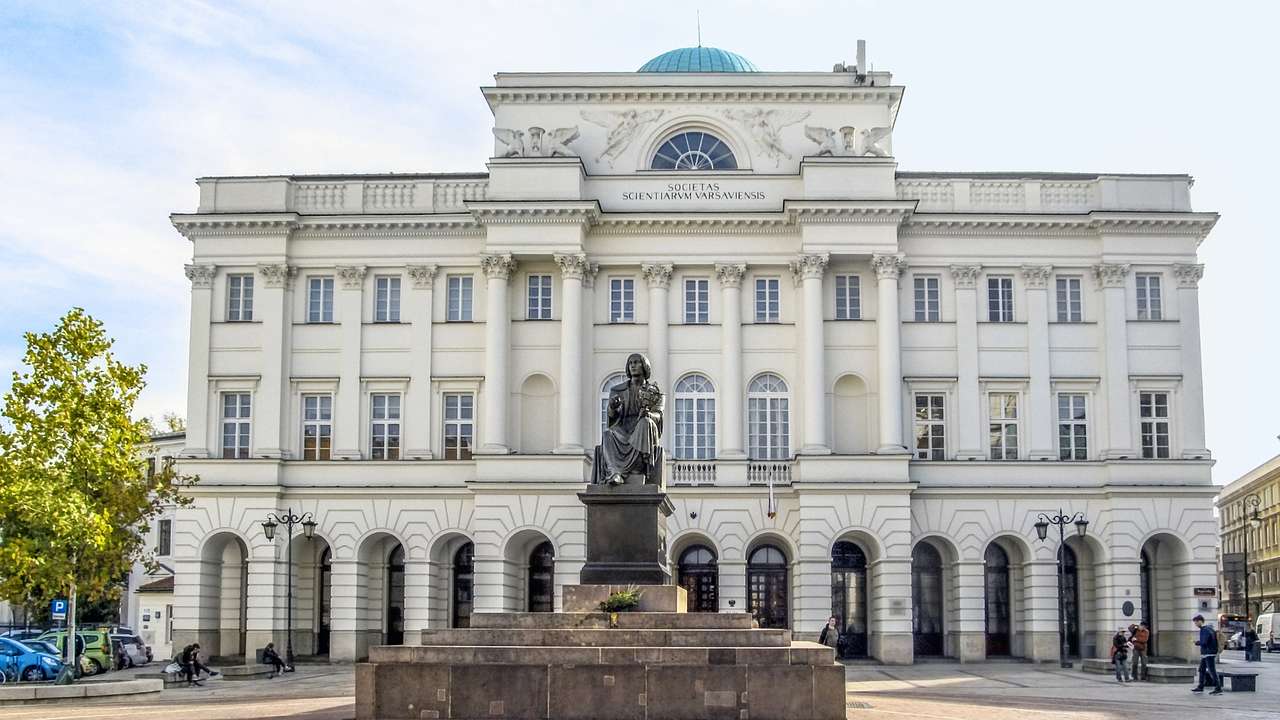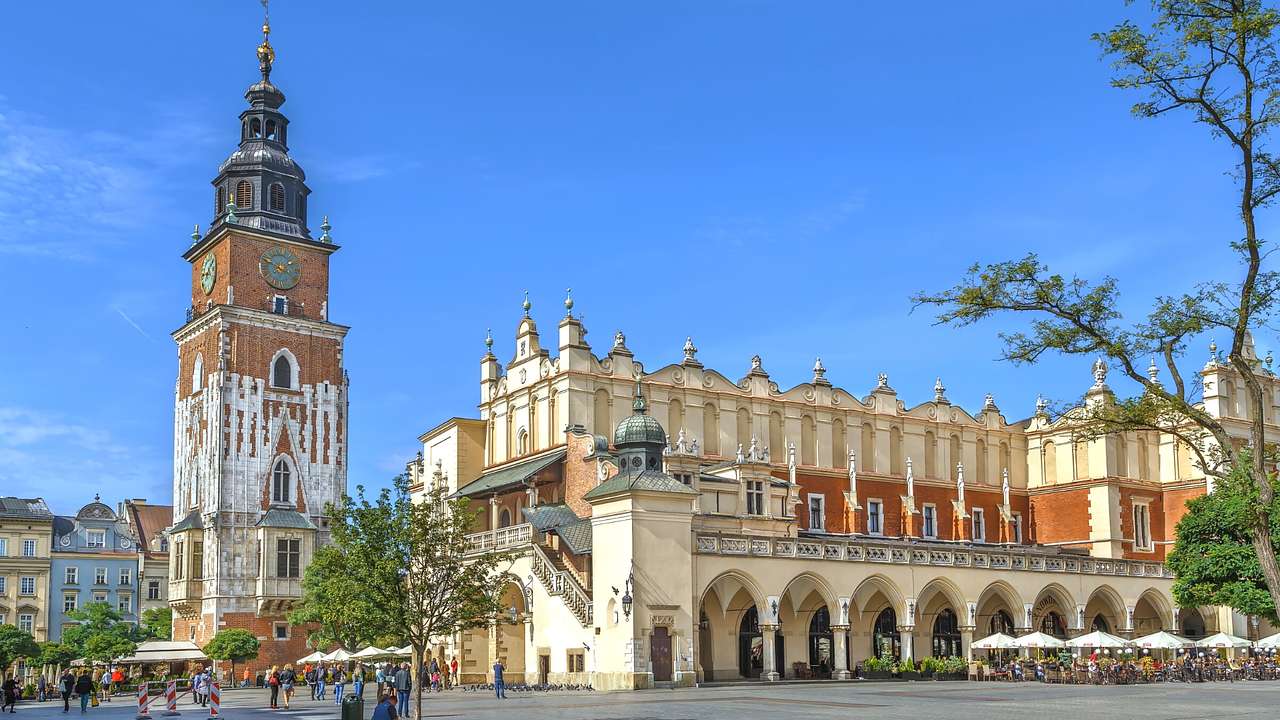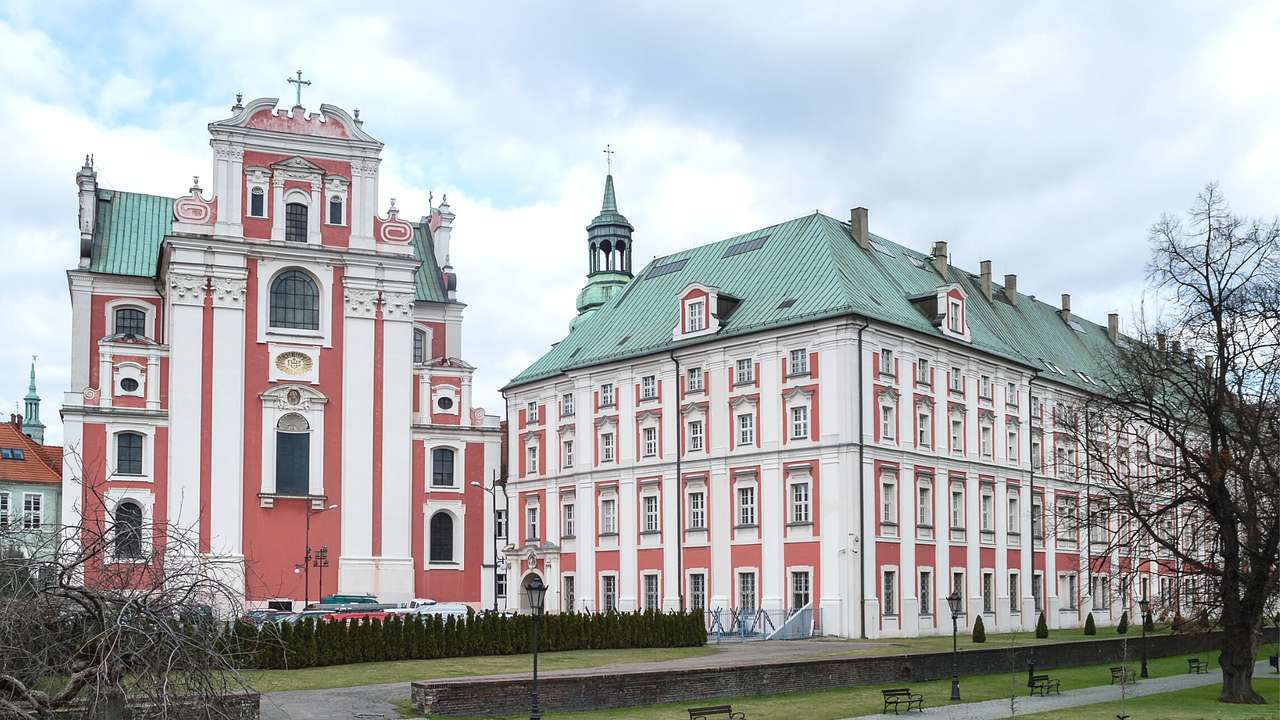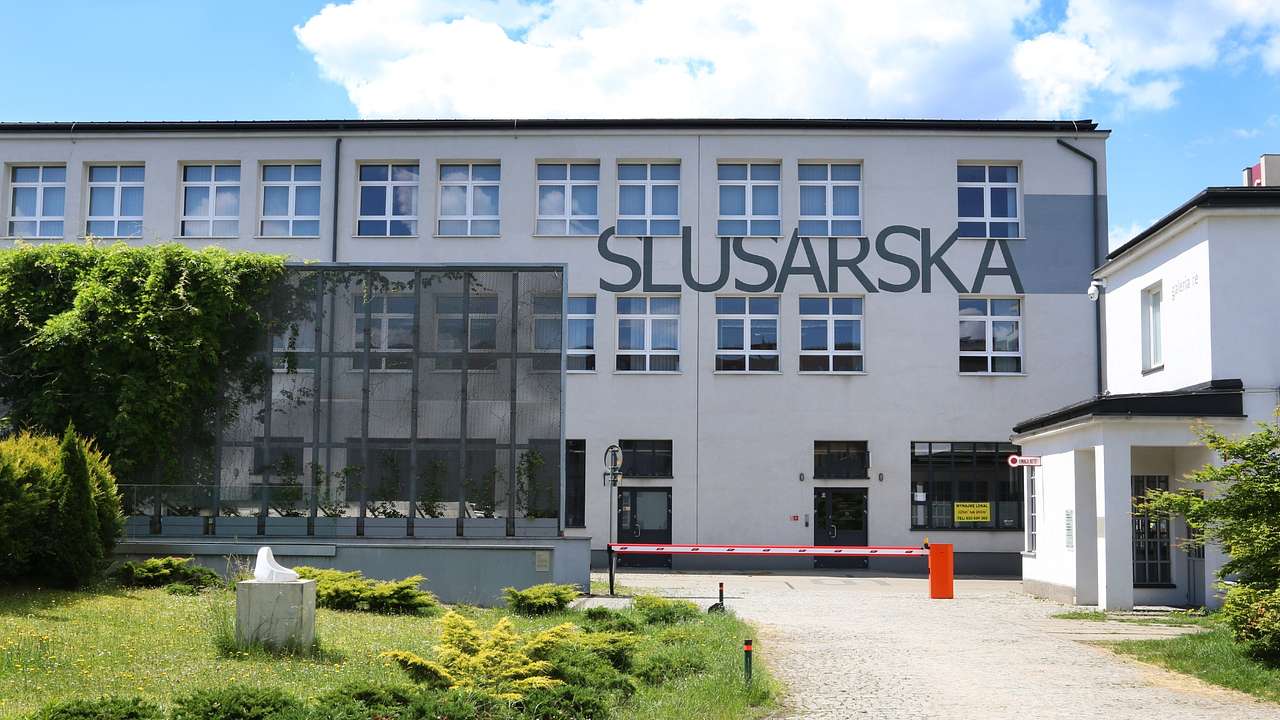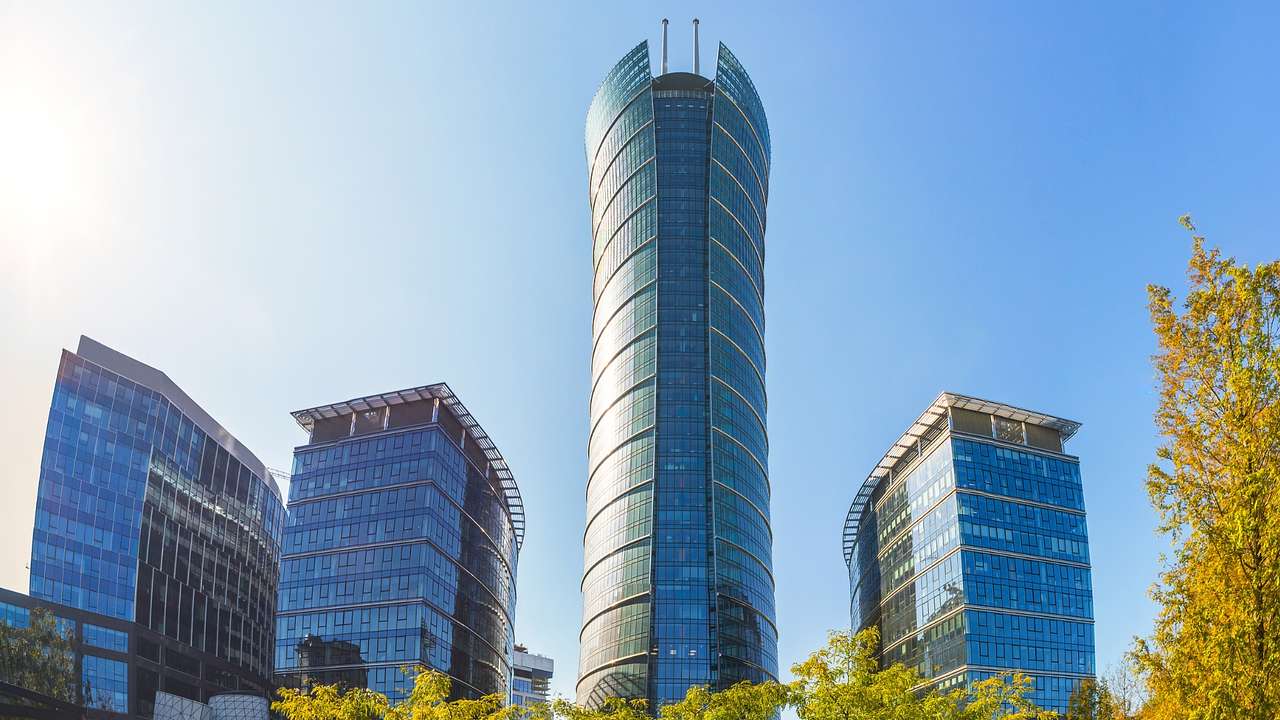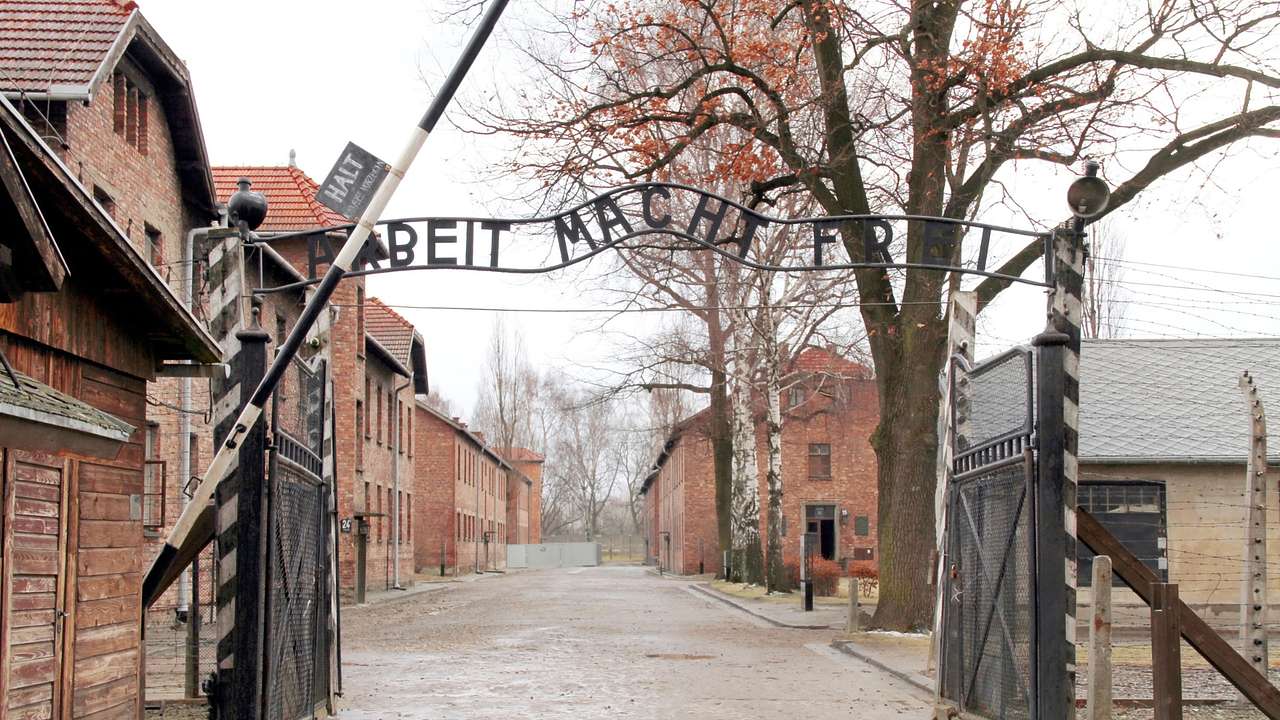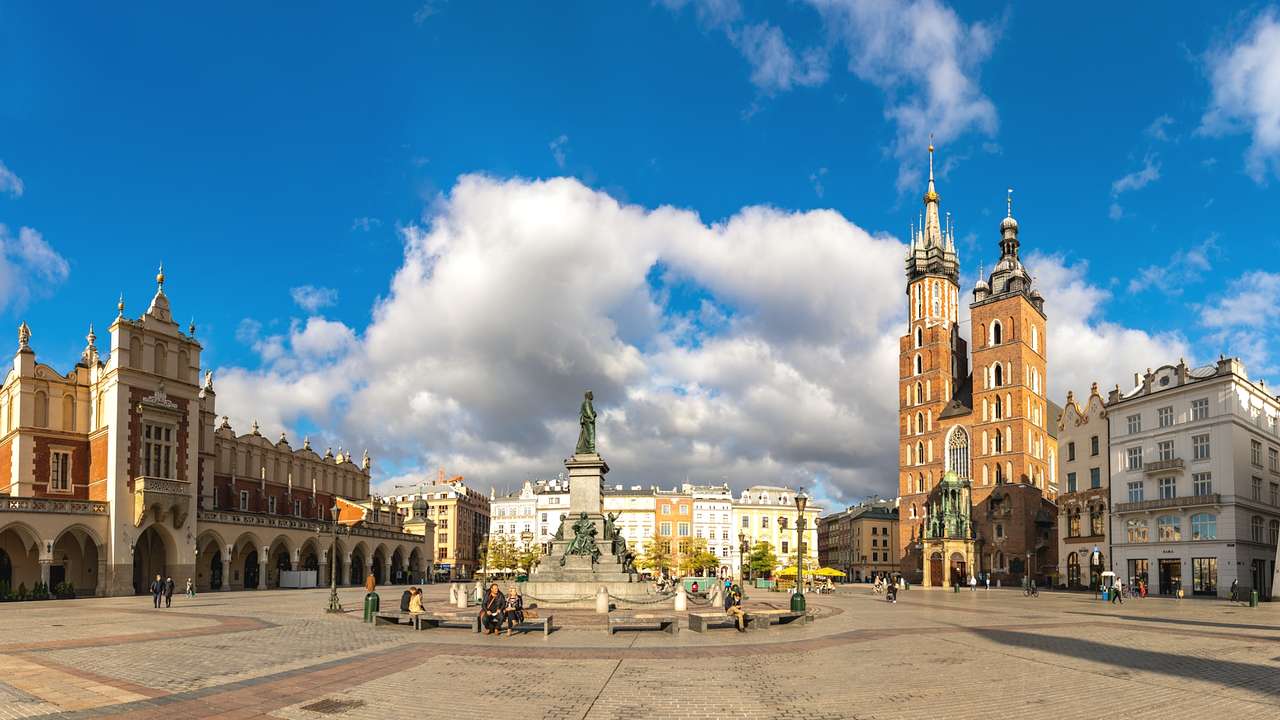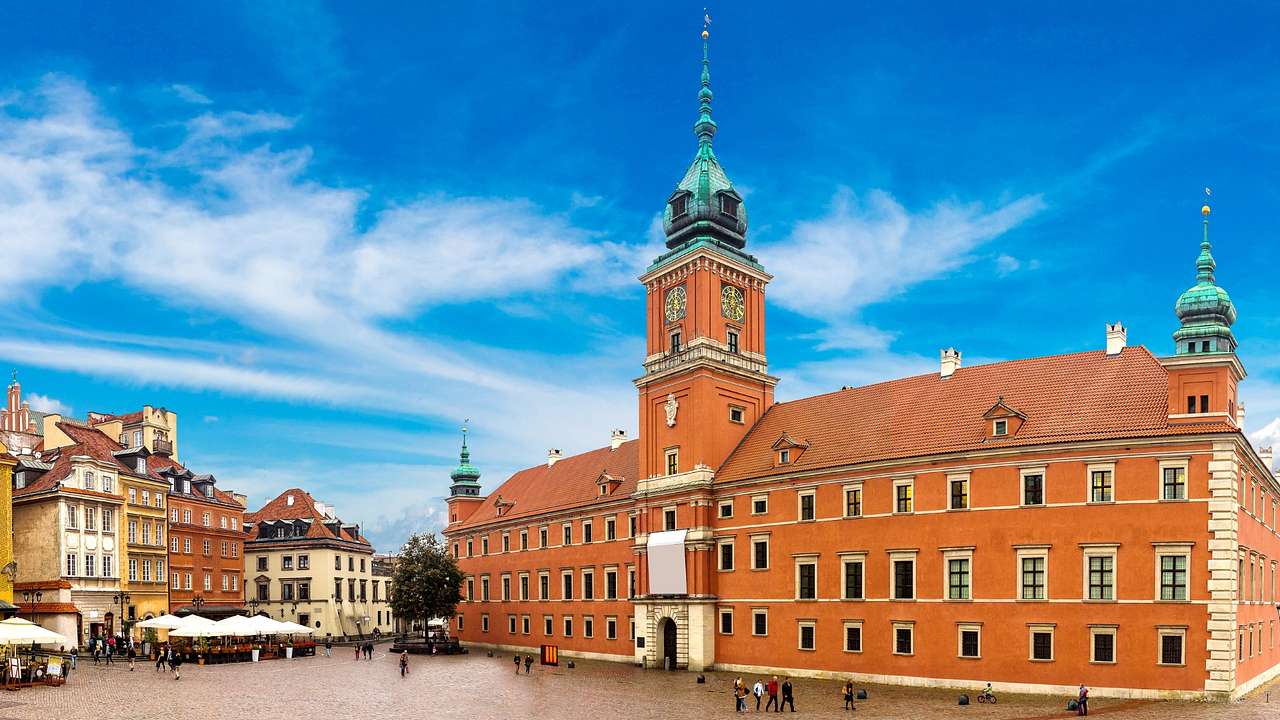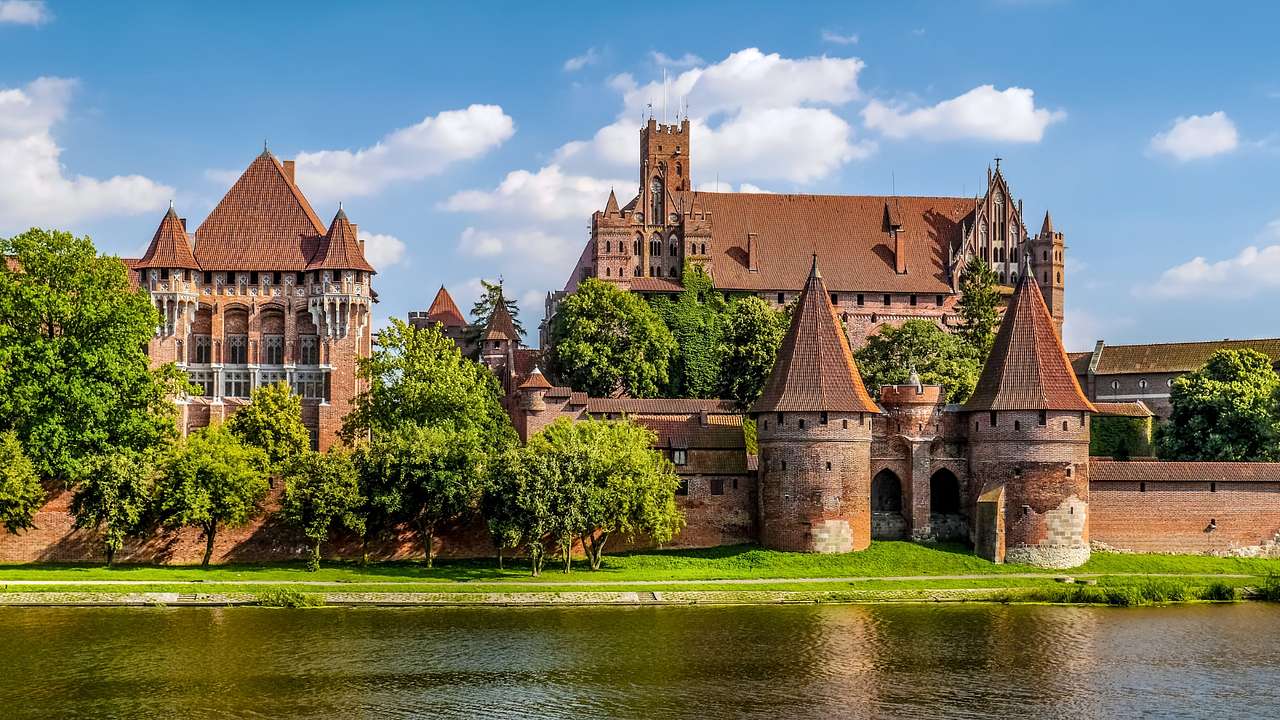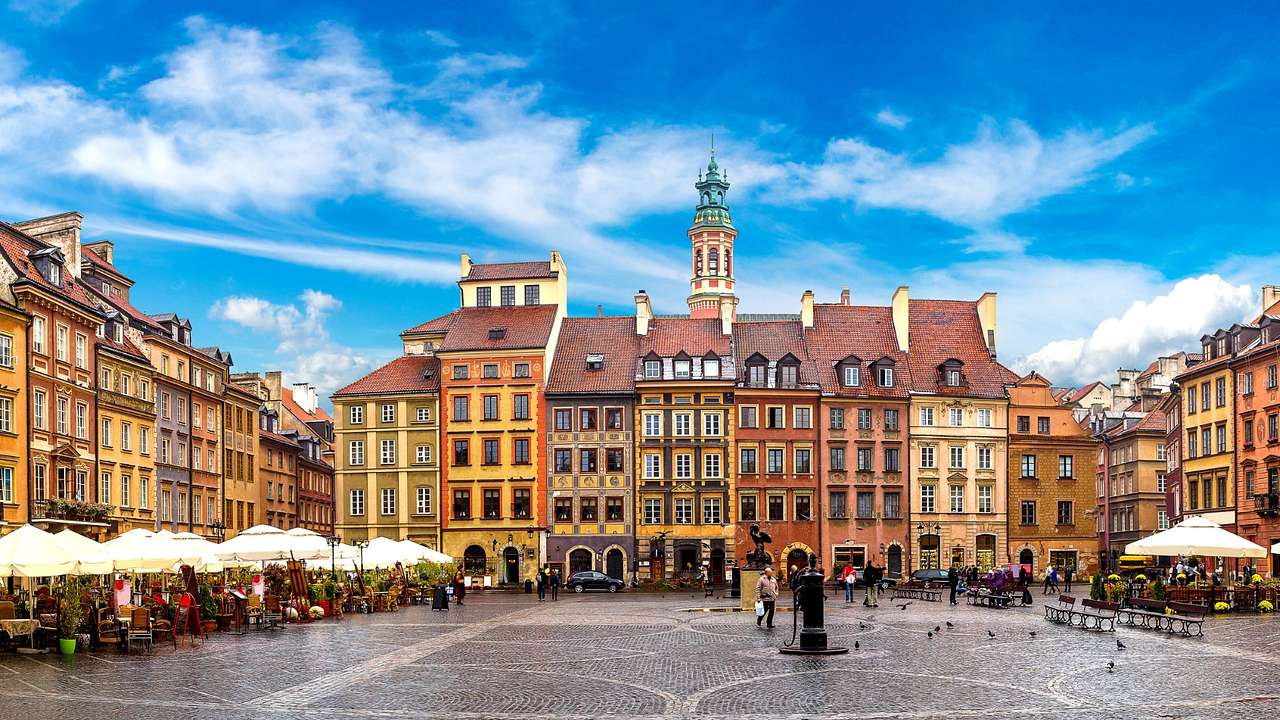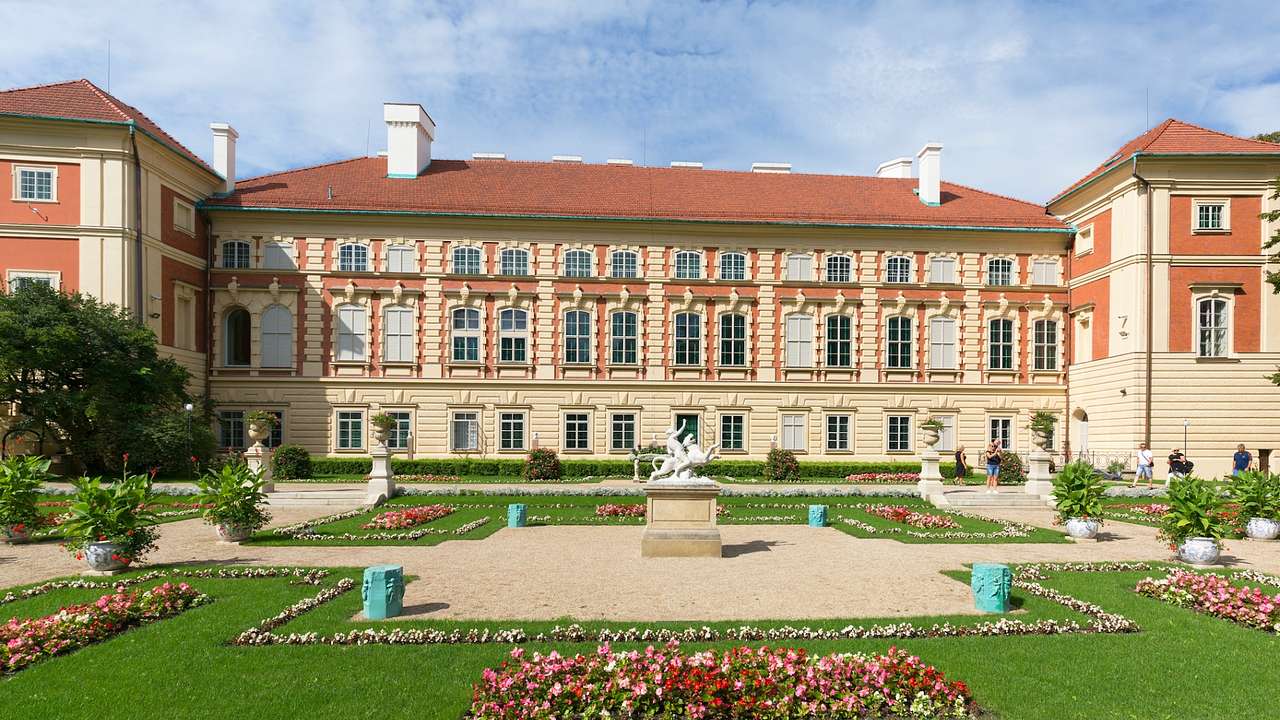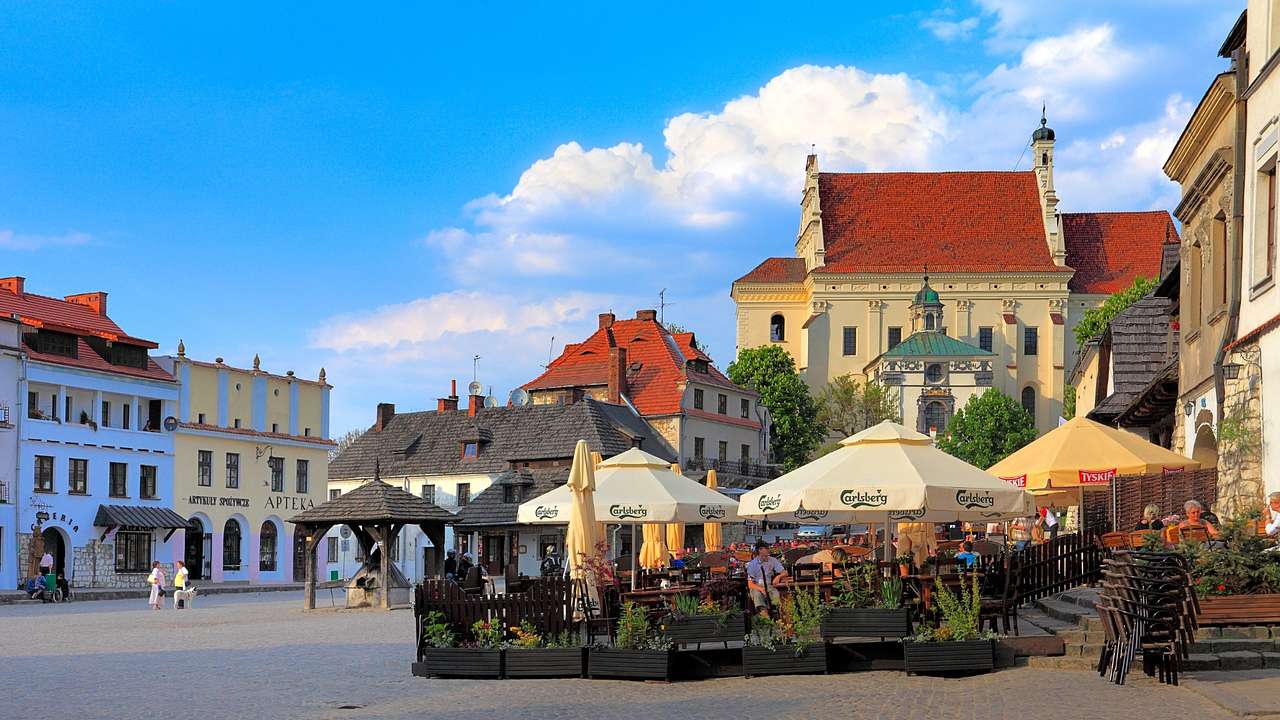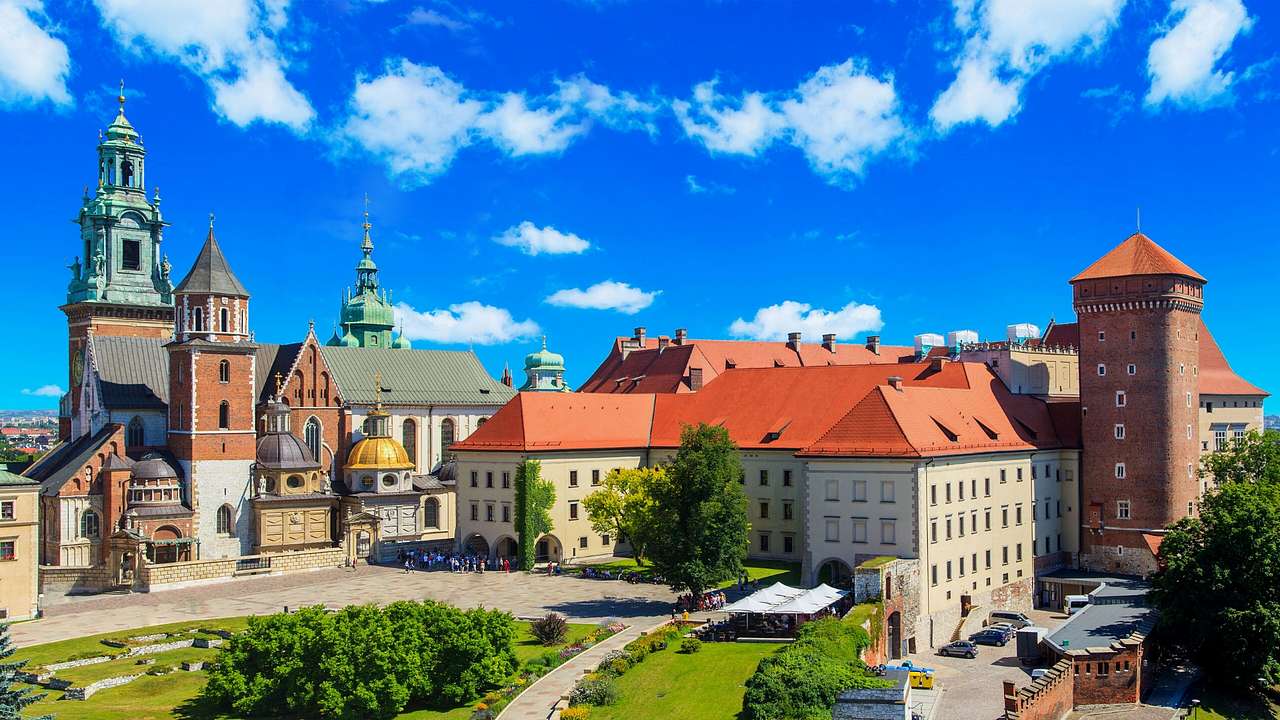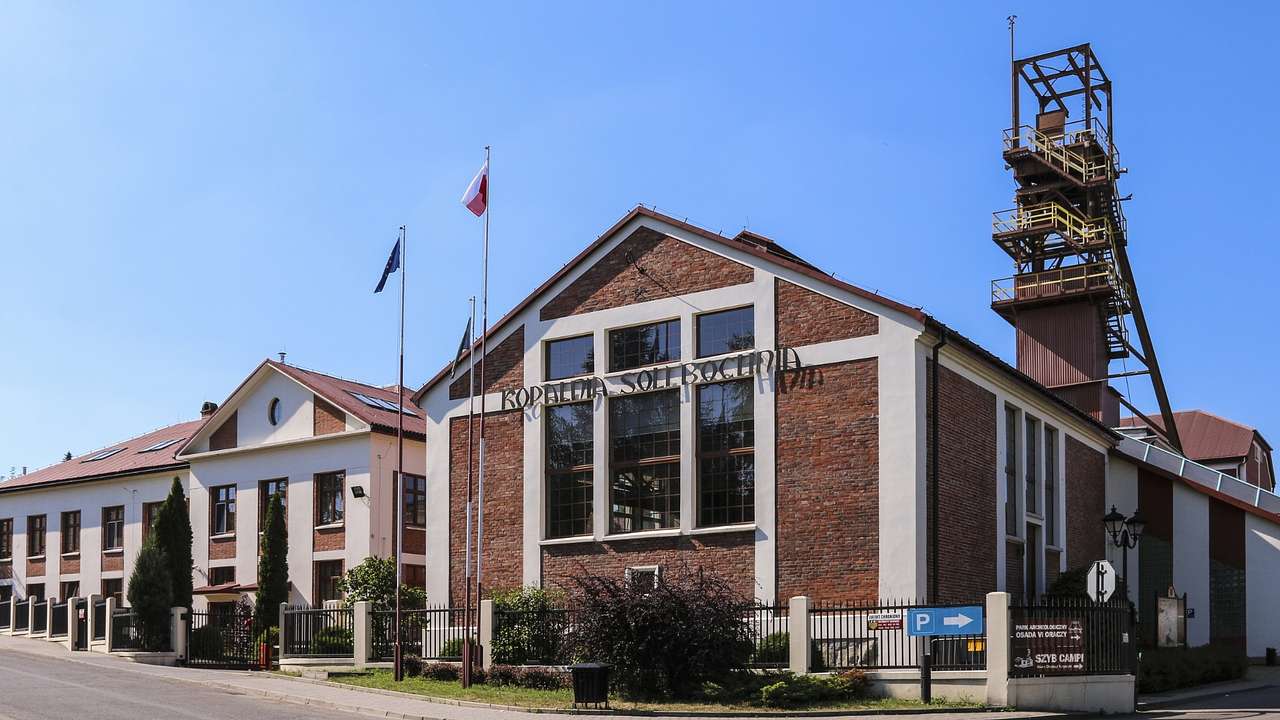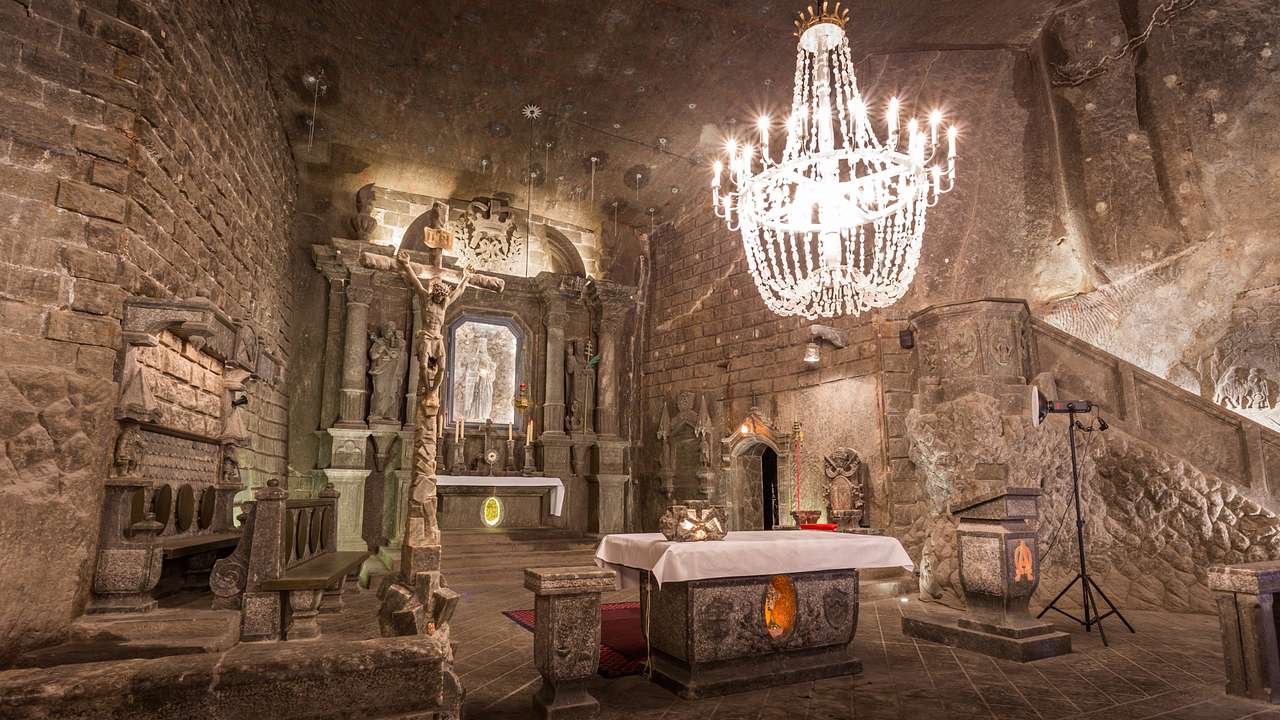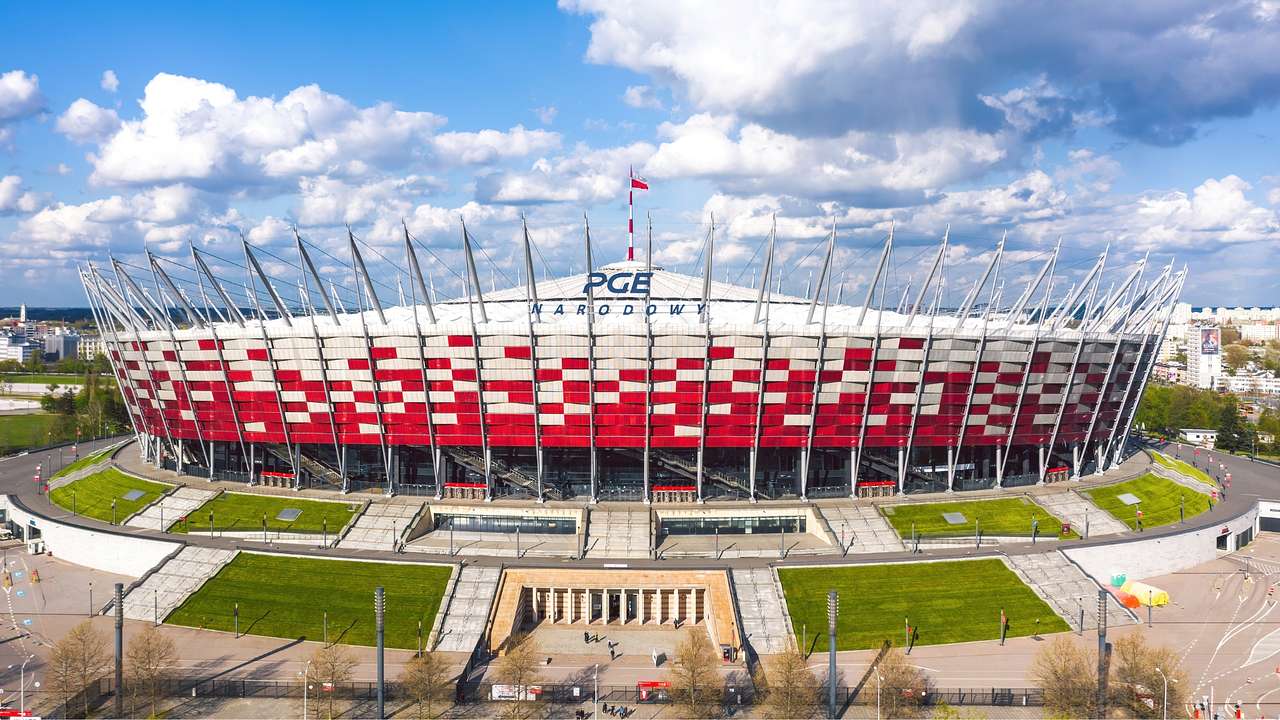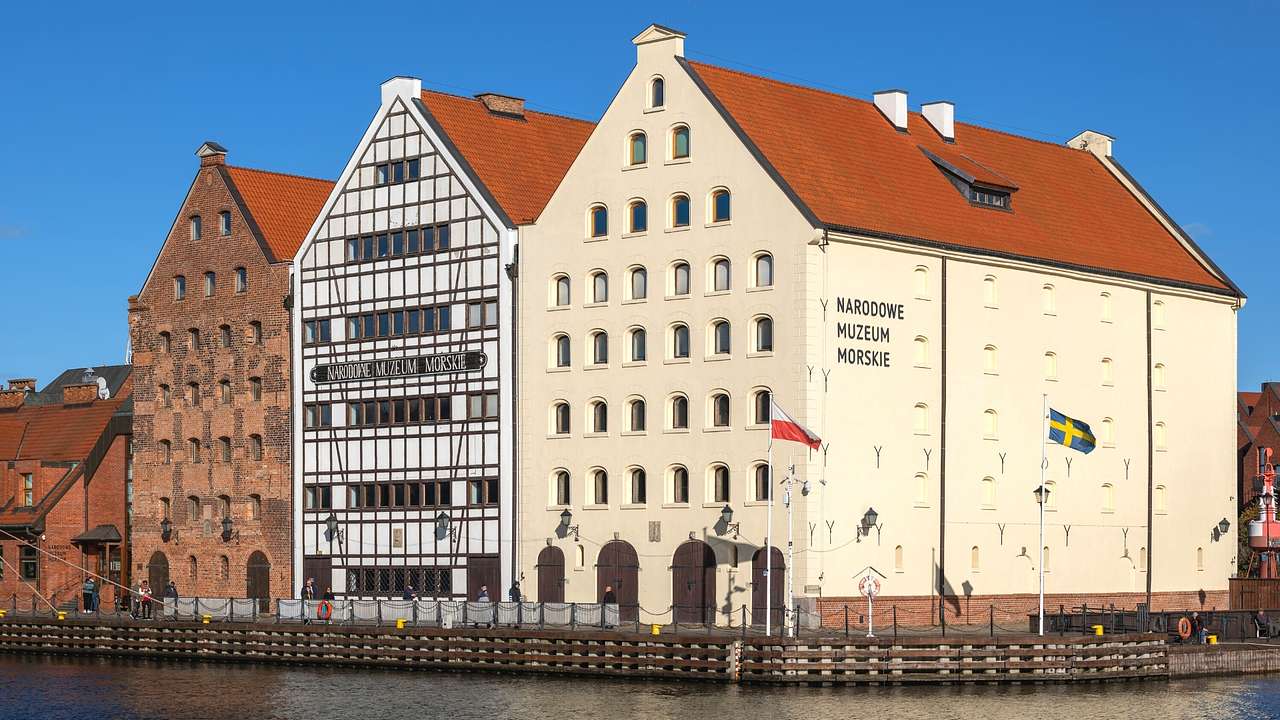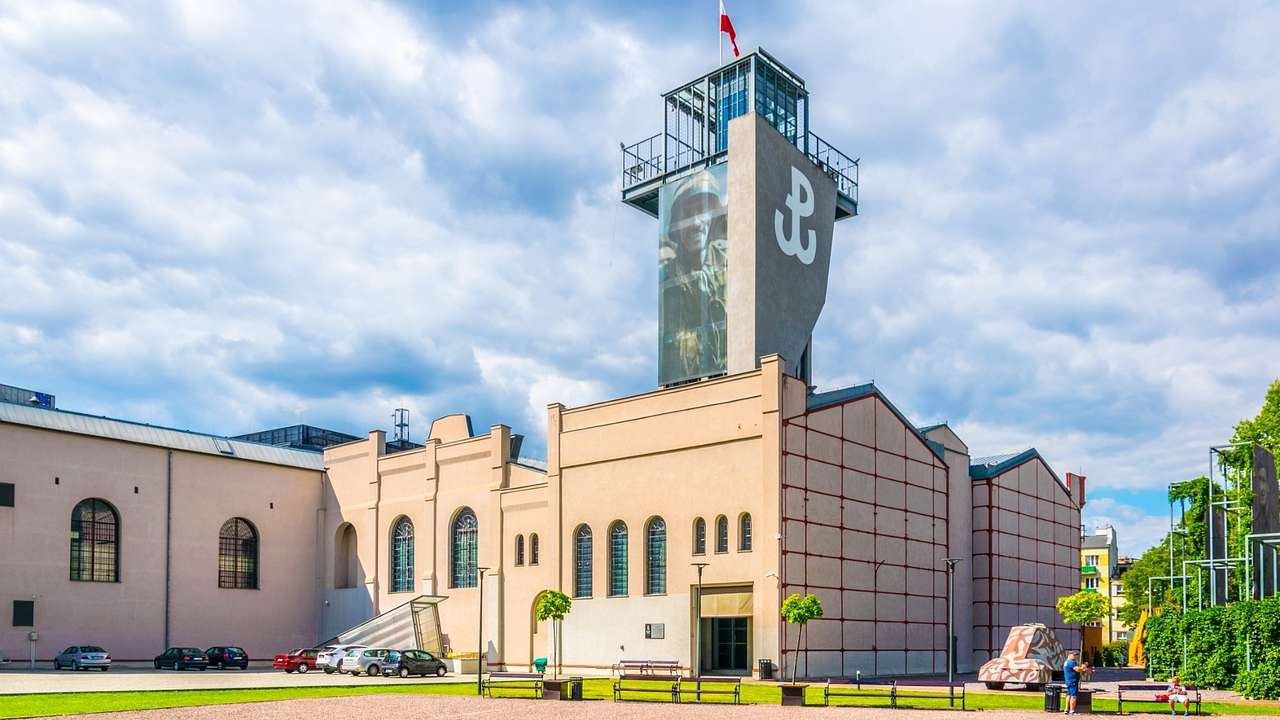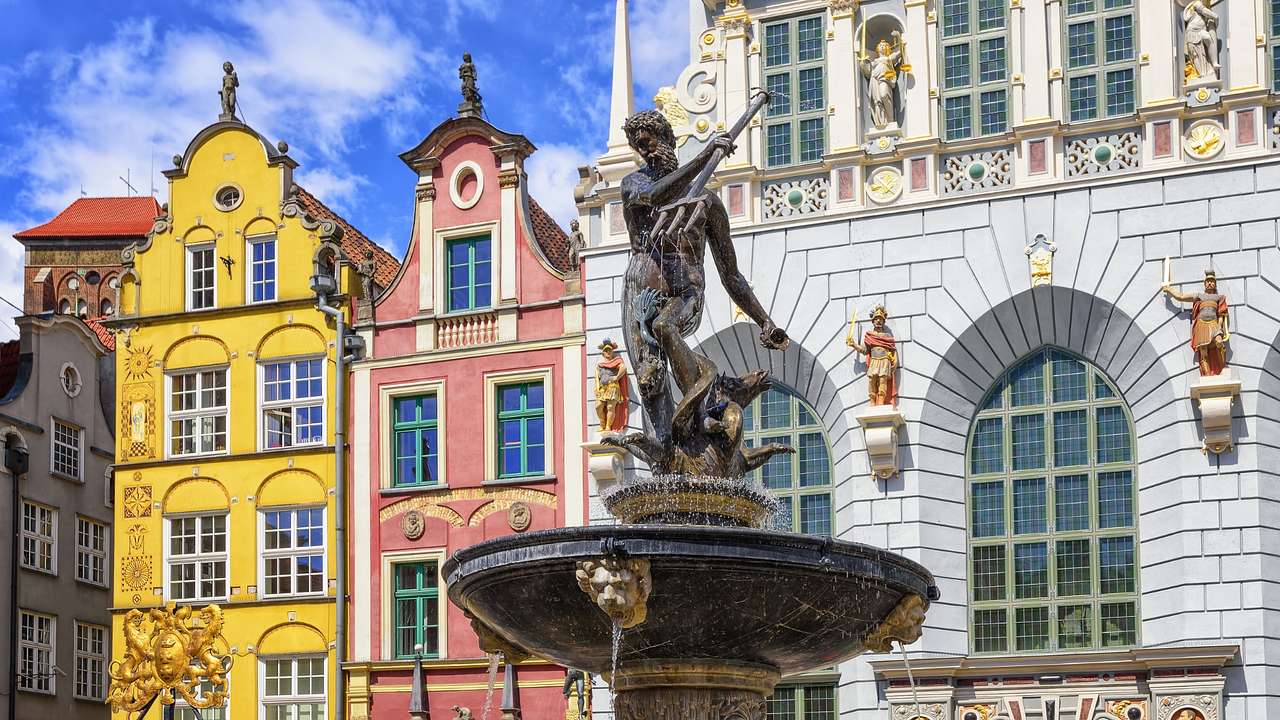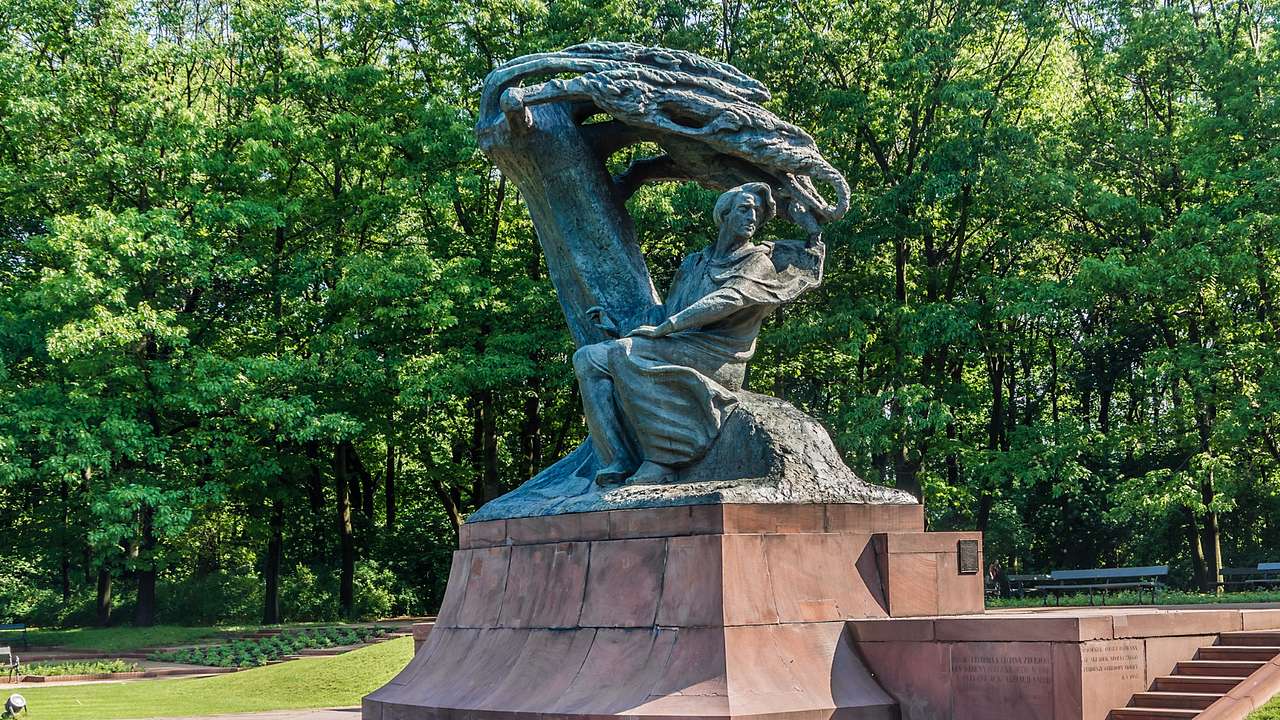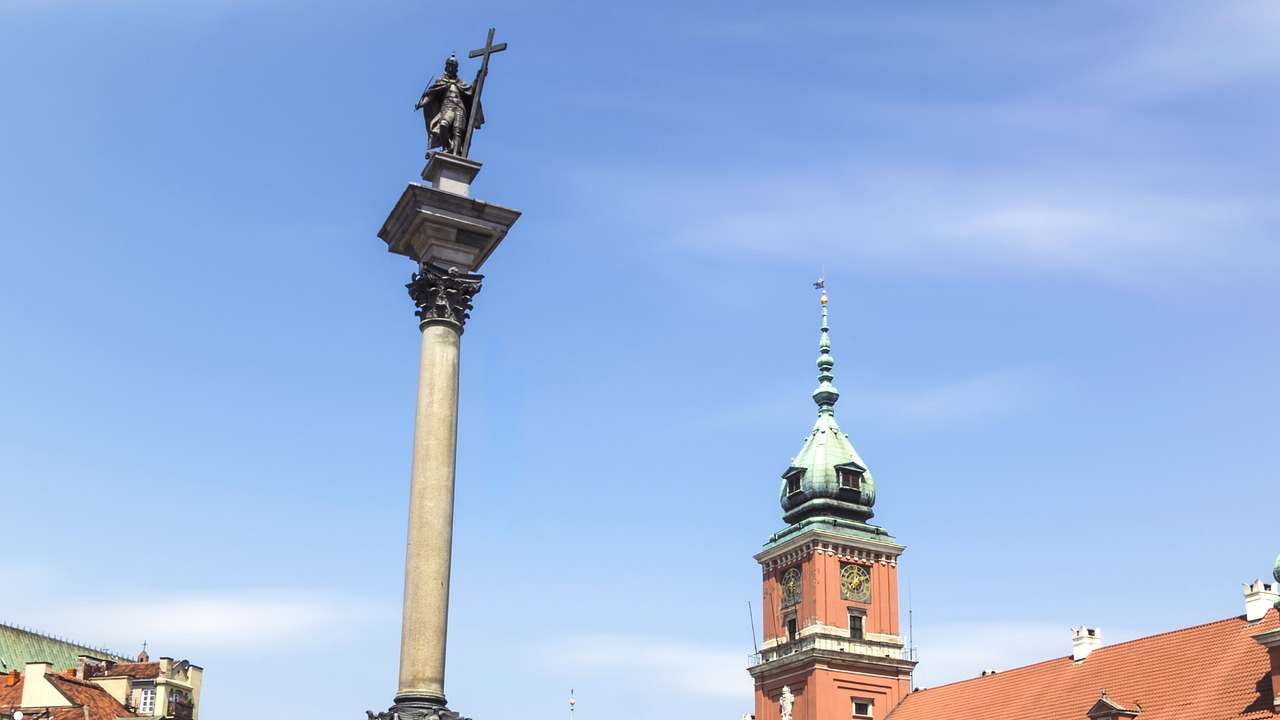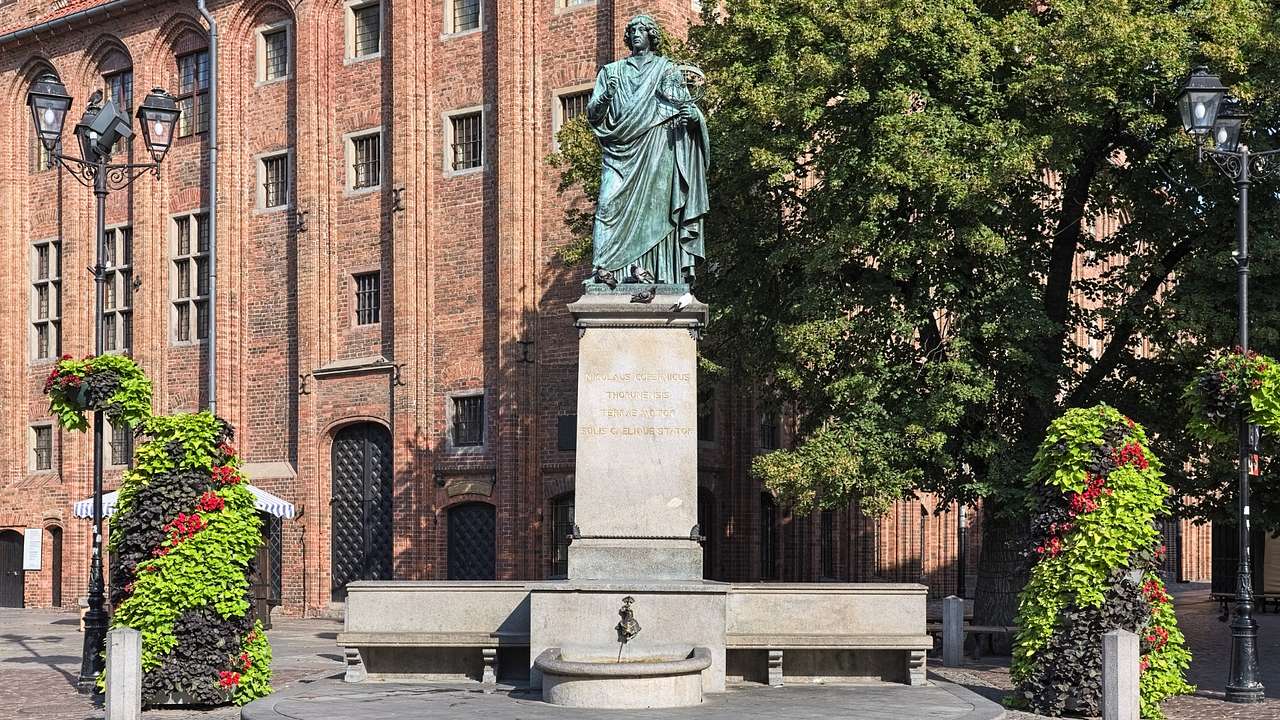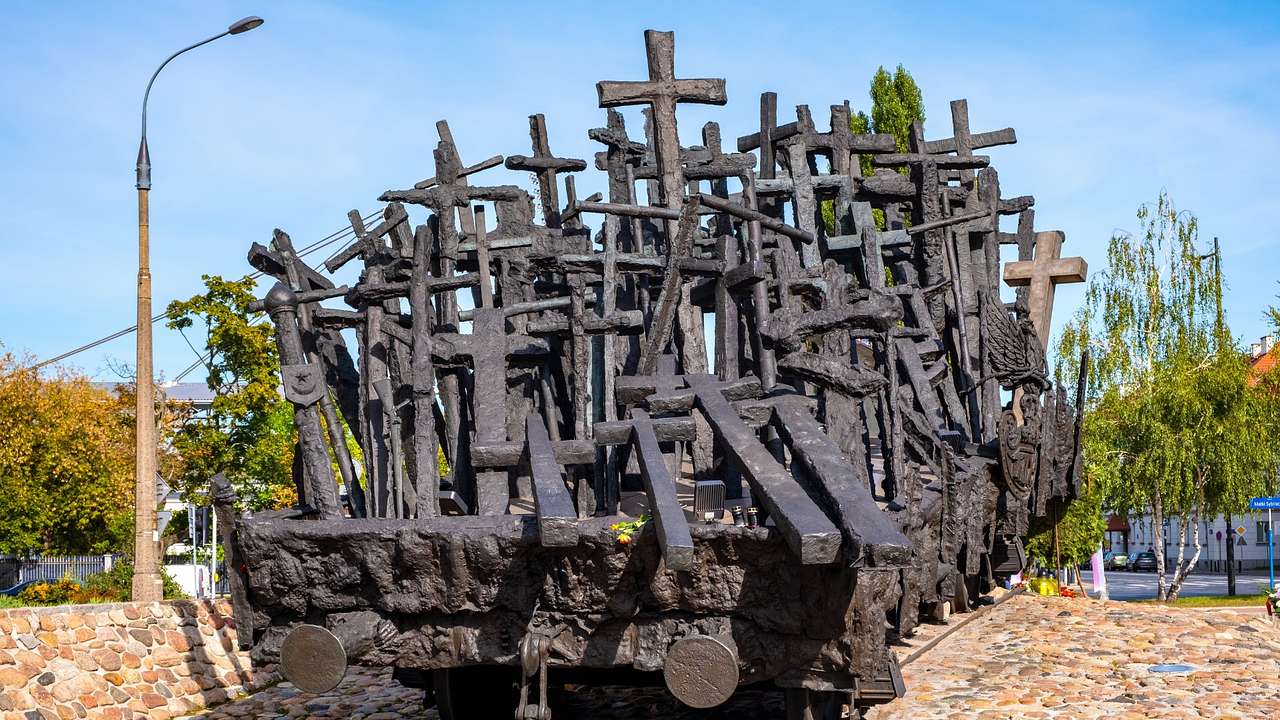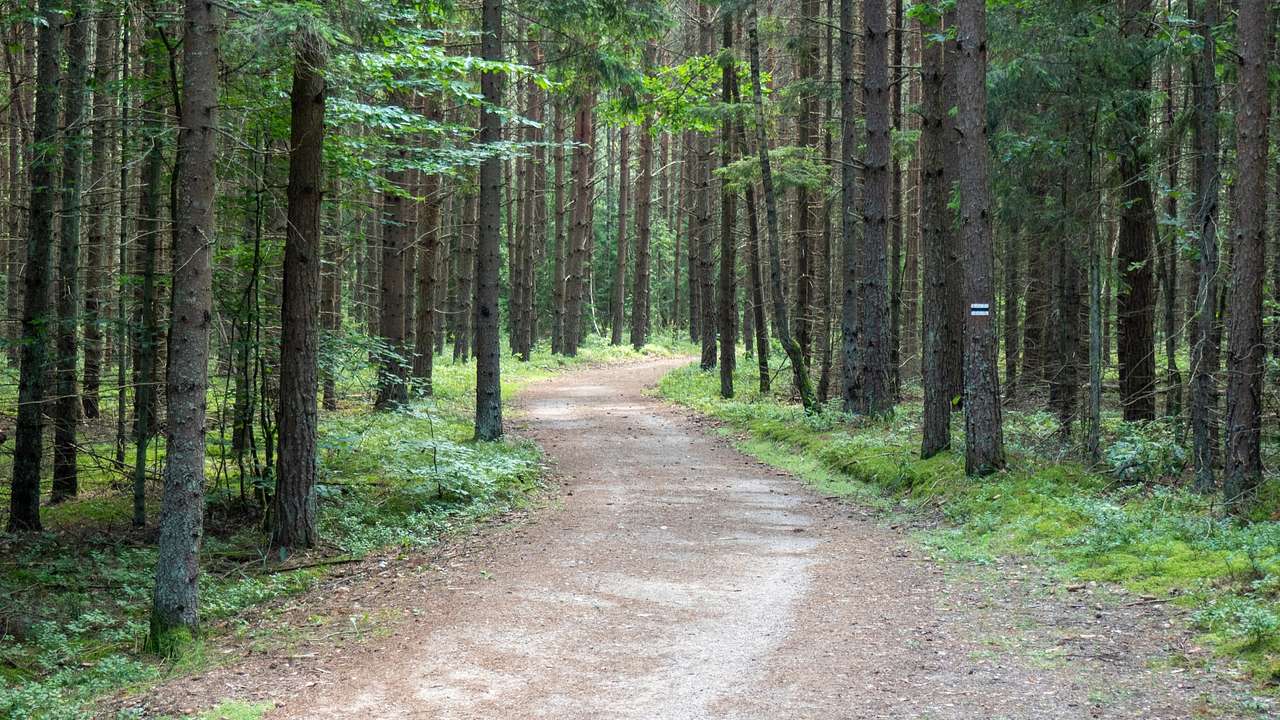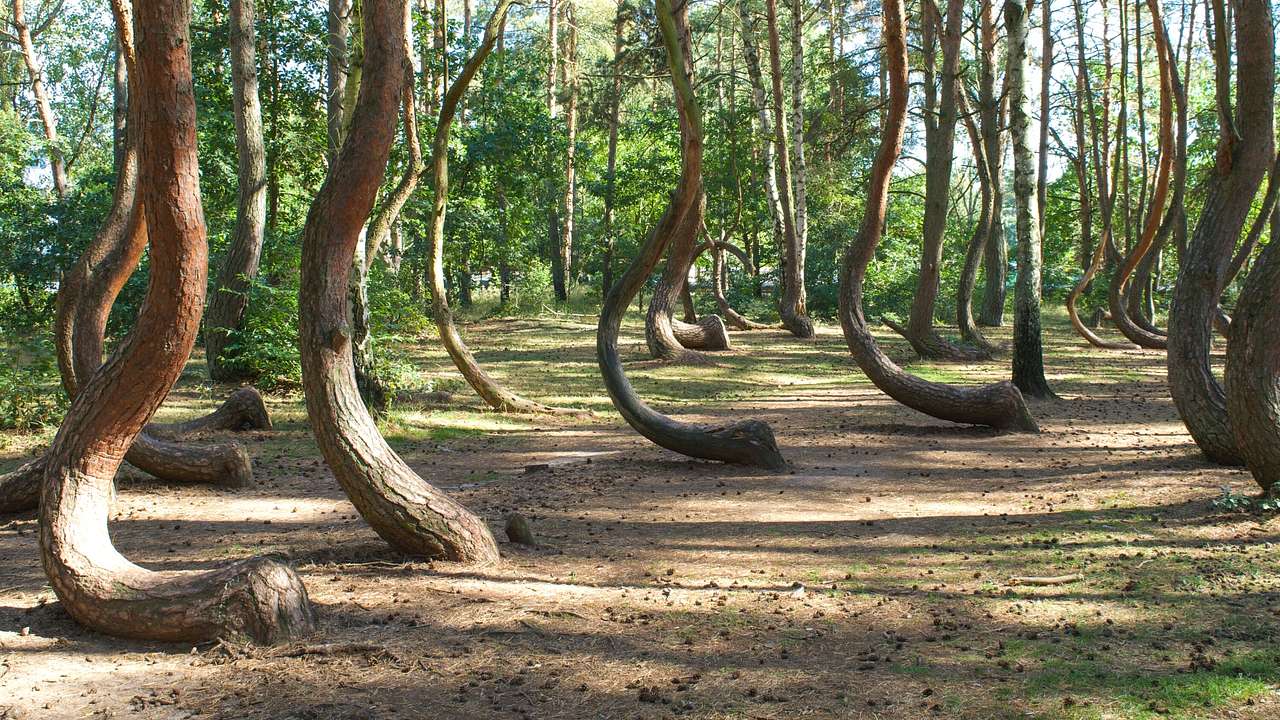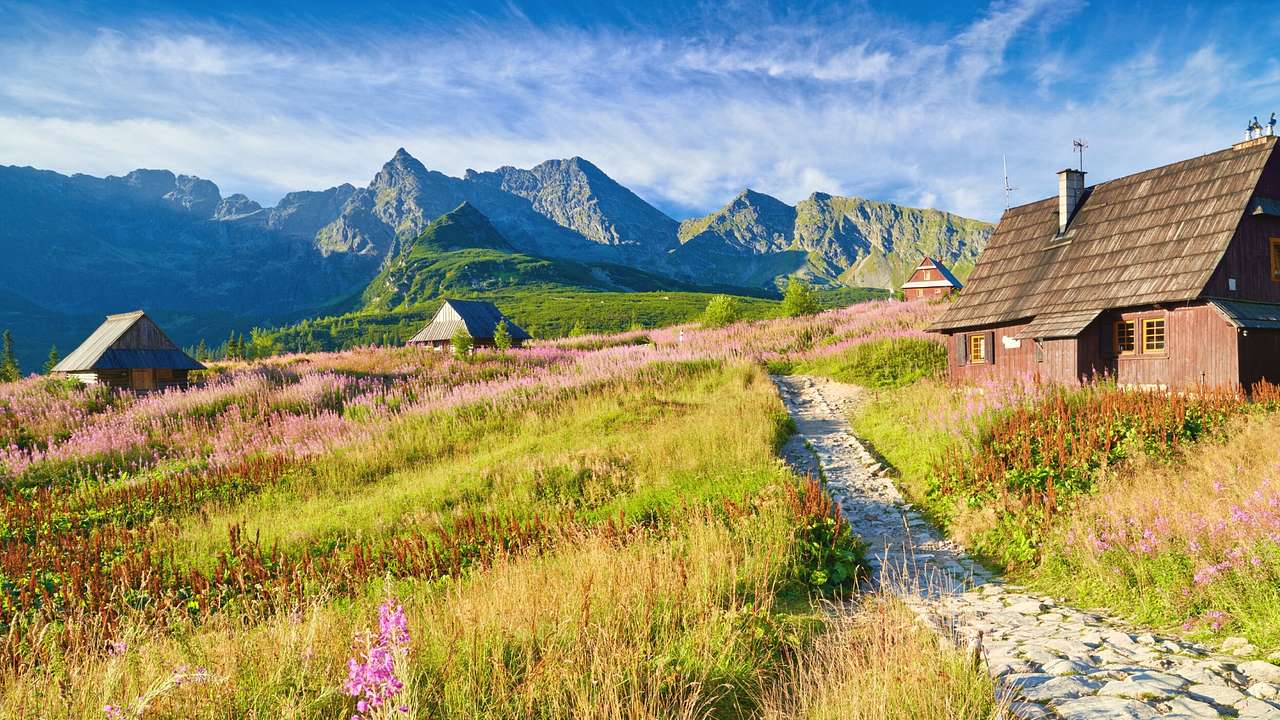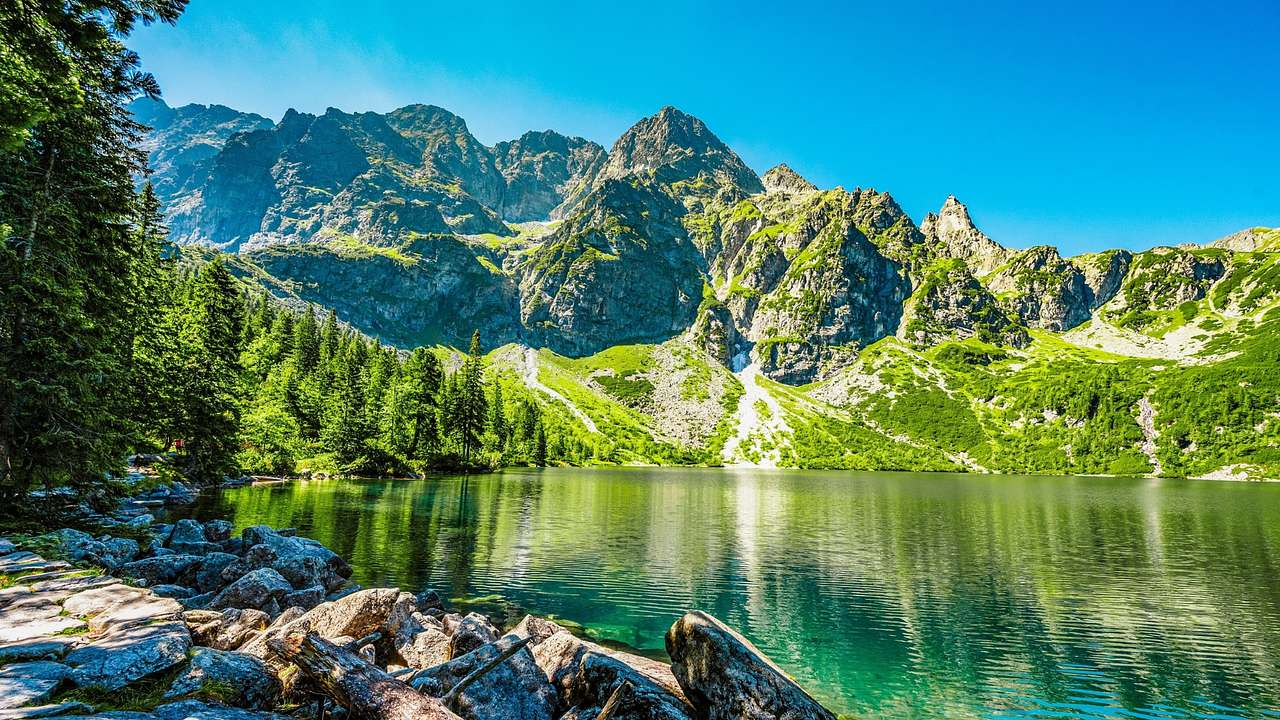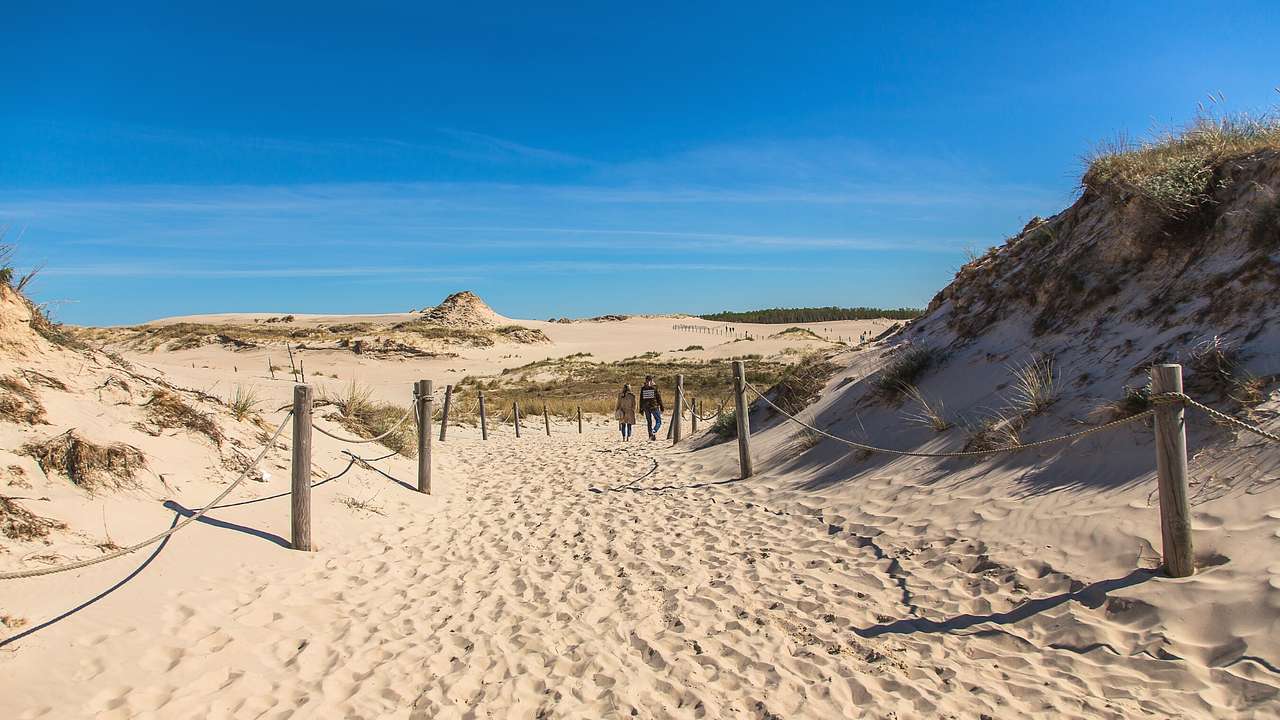35 Famous Landmarks in Poland to See
Destguides may receive commissions from purchases made through affiliate links in this article.
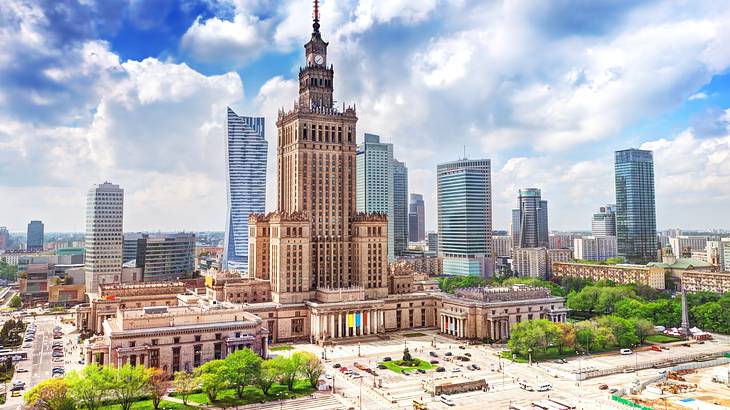
Poland is a unique country to visit, with an array of natural, historical, and cultural landmarks. Visitors can find sites dating back centuries, as well as more modern attractions and landmarks relating to WWII.
Famous landmarks in Poland that you have to visit include the fascinating Bochnia Salt Mine, Tatra National Park, and the sombre but important Auschwitz-Birkenau. If you are planning a trip to Poland, keep reading to learn about 35 landmarks you can't miss when in the country!
Planning a last-minute trip to Poland?
Book your entrance tickets and tours for your trip to Poland early! Here are some top choices to make your trip enjoyable.
☂️ Top tours and experiences in Poland
- Day Trip to Auschwitz-Birkenau & Wieliczka Salt Mine From Krakow Including Lunch (likely to sell out)
- From Krakow - Auschwitz-Birkenau Guided Tour & Pickup Options (likely to sell out)
- Auschwitz & Birkenau - Live-Guided Tour With Transportation & Hotel Pickup (likely to sell out)
- Krakow - Zakopane Tour With Thermal Pools & Hotel Pickup
- Krakow - Wieliczka Salt Mine Guided Tour
35 Famous Polish Landmarks
Poland Landmarks Video
Check out our highlights video of Poland landmarks.
Poland Landmarks Map
A map of Poland landmarks. Use the map to explore all of the points of interest.
Famous Buildings in Poland
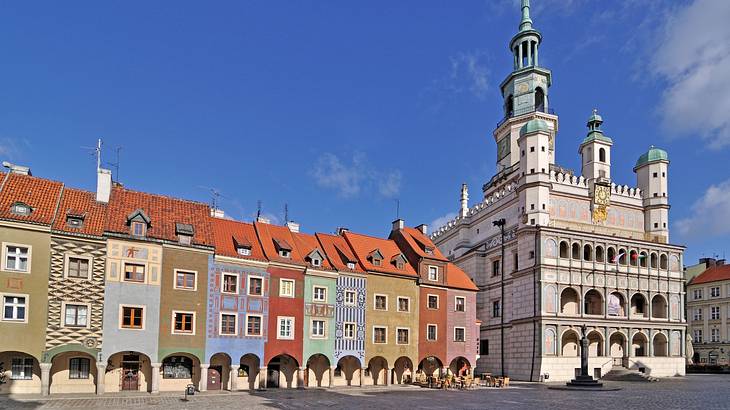
Poznań Town Hall
Poznań Town Hall has sat in Old Market Square in Poznań since 1560. It features Renaissance and Gothic architectural design elements and was created by Giovanni Battista di Quadro, one of Europe's most famous 16th-century architects.
The building served as a seat of government for centuries until 1939 and today houses a museum. Interestingly, the town hall features two mechanical goat statues that butt heads at noon each day!
☂️ Visit the Town Hall with a tour
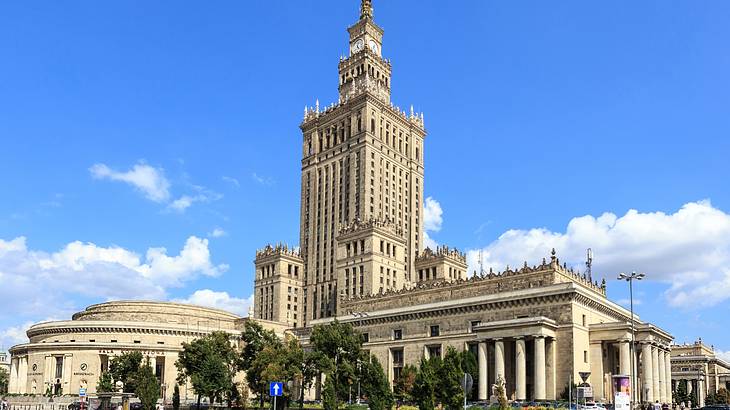
Palace of Culture and Science
The Palace of Culture and Science stands out on the Warsaw skyline. The 237-metre structure, with 42 floors, is the second tallest in the capital city and Poland as a whole, after Varso. Opened in 1955, the building now houses offices and an exhibition space. There is also a viewing deck offering 360-degree views over Warsaw.
☂️ Explore the Palace of Culture and Science on a tour
- Warsaw Must See Private Walking Tour With Guide 3h (frequently sold out)
- Private Tour - Warsaw City Sightseeing by Retro Fiat (rated very highly)
Varso
Also known as Varso Place, Varso is the tallest building in Poland. The Neomodern building in Warsaw is also the tallest building in the EU and the sixth tallest in Europe.
In addition, this is one of Poland's most modern landmarks, having opened in 2022. While most of the building is office space, there is a hotel and viewing deck for tourists. You can also find some eateries and a gym.
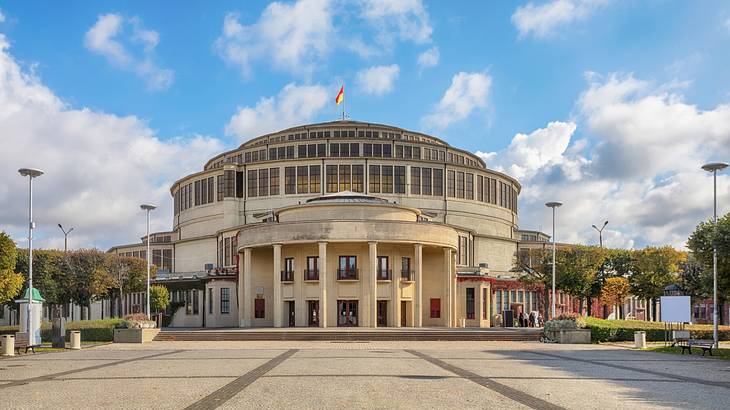
Centennial Hall
Centennial Hall is one of the more modern Polish landmarks, having opened in 1913. Located in Wroclaw in Szczytnicki Park, the building has some exhibits and also hosts events, like boxing competitions and volleyball matches.
Going to Centennial Hall is definitely one of the best things to do in Wroclaw, even to just admire the architecture!
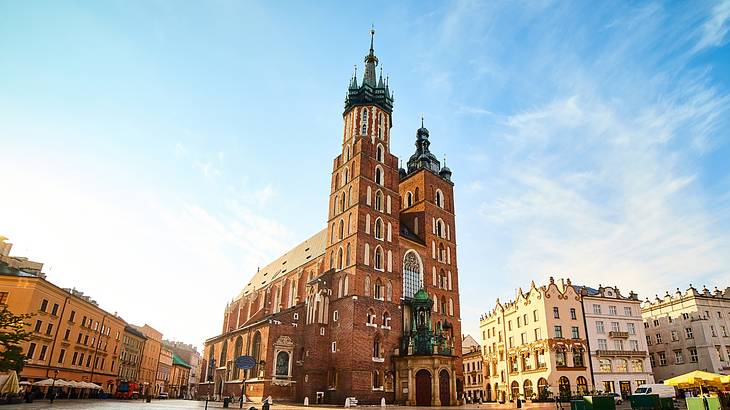
St. Mary's Basilica
Located in Krakow, the 14th-century St. Mary's Basilica is an excellent example of Polish Gothic architecture. The church also became a UNESCO World Heritage Site in 1978, 631 years after its completion in 1347. Today, the basilica remains an active church, and tourists can visit between services to admire the architecture.
☂️ See St Marys Basilica on a tour
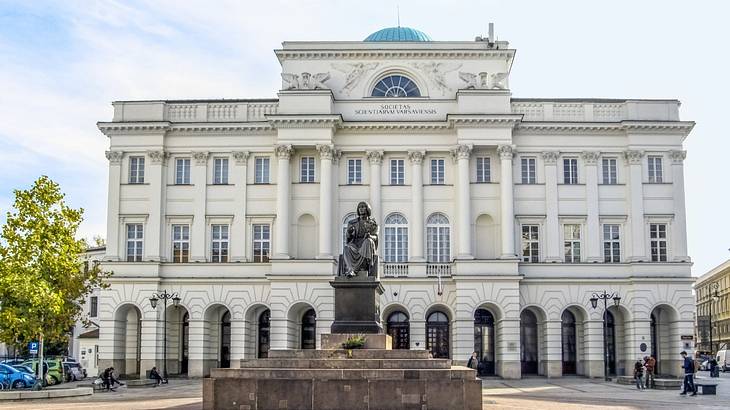
Staszic Palace
Another landmark found in Warsaw is Staszic Palace. This famous building dates to the 1620s, when Sigismund III Vasa requested an Eastern Orthodox chapel be constructed.
The palace was then expanded over the next three hundred or so years. Its last reconstruction was in the 1940s after being damaged in WWII, and today it is the seat of the Polish Academy of Sciences.
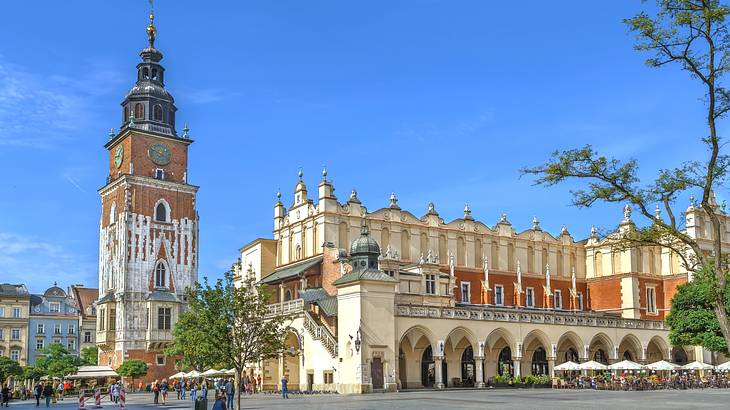
Kraków Cloth Hall
Kraków Cloth Hall is one of the city's most well-known structures and a famous Polish landmark. The Renaissance structure dates to the 15th century when it was a major centre of trade. Today, the building houses the Sukiennice Museum, which has the largest collection of 19th-century Polish paintings and sculptures in the country.
☂️ Explore the Cloth Hall with a tour
- Krakow Old Town - Two-Hour Tour With Local Historian, PhD (often praised)
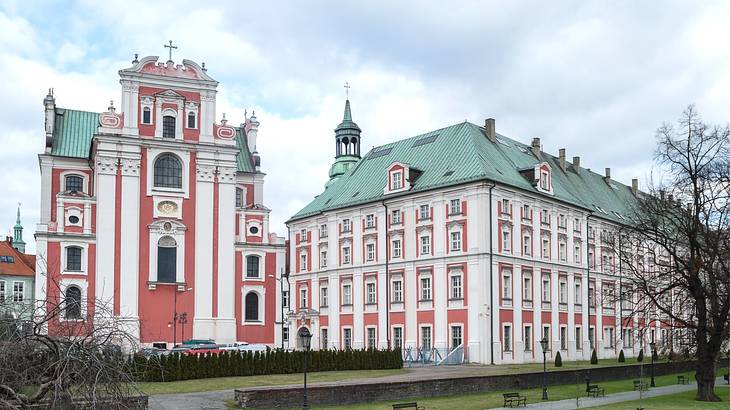
Poznań Fara
Situated in the Old Town of the city of Poznań, Poznań Fara is an 18th-century Roman Catholic basilica. The church was constructed at the end of the 1600s and consecrated in 1705. However, the church was not yet complete, with work continuing through 1732.
Poznań Fara was then reconstructed after a fire near the end of the 1700s and was also remodelled after WWII. Visitors now flock to the church to admire the design and potentially spot the building's resident ghost, a woman in black who appears on the organ balcony!
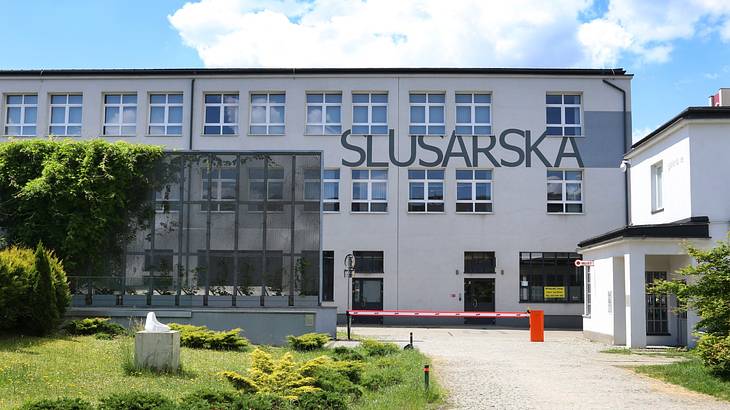
Oskar Schindler's Enamel Factory
Oskar Schindler's Enamel Factory is a former metal factory located in Krakow. The factory initially opened in 1937 under a different name but was bought by Oskar Schindler during the Second World War.
Despite being a member of the Nazi party, it is believed that Oskar saved around 1,200 Jews from death by employing them at the factory.
Today, the building houses two museums, the Museum of Contemporary Art in Kraków and the Historical Museum of the City of Kraków, which covers topics related to WWII and the life of Jews in Krakow during this period.
☂️ Explore Oskar Schindlers Enamel Factory with a tour
- Krakow - Oskar Schindler's Enamel Factory Private Tour (frequently earns a five-star rating)
- Schindler's Factory Guided Tour in Krakow (very popular)
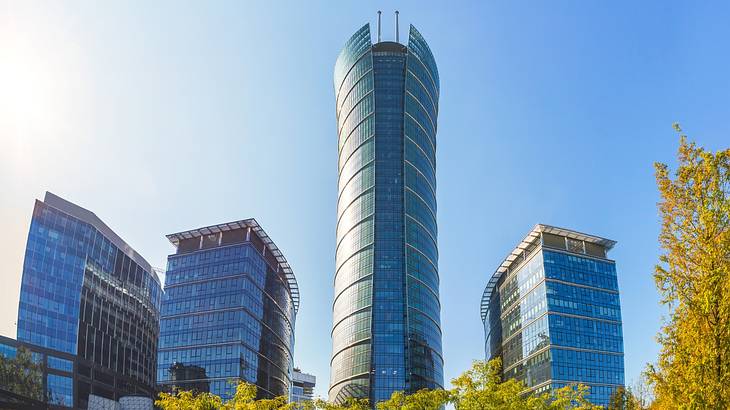
Warsaw Spire
The Warsaw Spire is another modern landmark. This skyscraper was constructed starting in 2011 and opened in 2016. It stands at 220 metres tall and features 49 floors, making it one of the tallest buildings in Warsaw.
In the evening, a sign that says "I Love Warsaw" in Polish is seen on the building, and a structure with the same phrase sits in front of it.
Historical Places in Poland
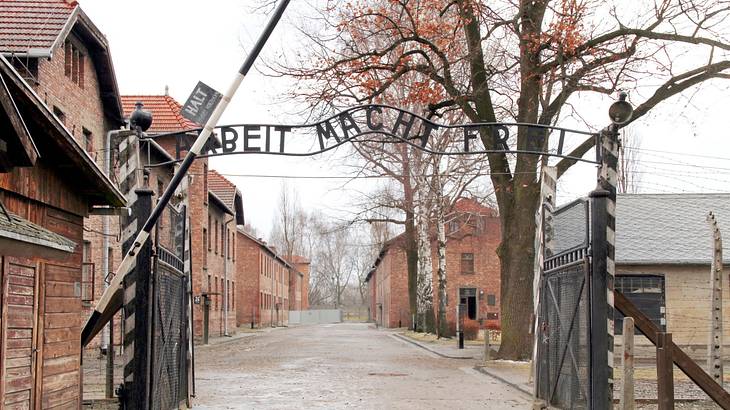
Auschwitz-Birkenau
Auschwitz-Birkenau is a sombre but important landmark located in Oświęcim. The site housed one of the largest Nazi concentration camp complexes in Europe and was operational from May 1940 to January 1945.
The camp sadly imprisoned about 1.3 million inmates, 1.1 million of whom were killed there. These individuals included Jews, Romani, Poles, and Soviet prisoners of war. Today, the landmark is a UNESCO World Heritage Site and museum where visitors can learn more about the people who lived and died there.
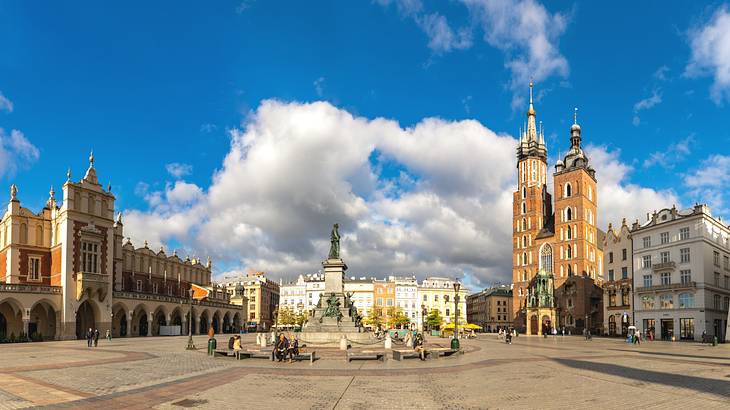
Main Market Square
Also known as Rynek Główny, Main Market Square is located in Old Town Krakow. The landmark dates to the 13th century and is Europe's largest medieval town square. Within the square are some other landmarks, like Cloth Hall and St. Mary's Basilica.
☂️ Experience the Rynek Główny with a tour
- Krakow - City Pass Krakow Card With 37 Museums (often fully booked)
- Krakow - Rynek Underground Museum Guided Tour (frequently earns a five-star rating)
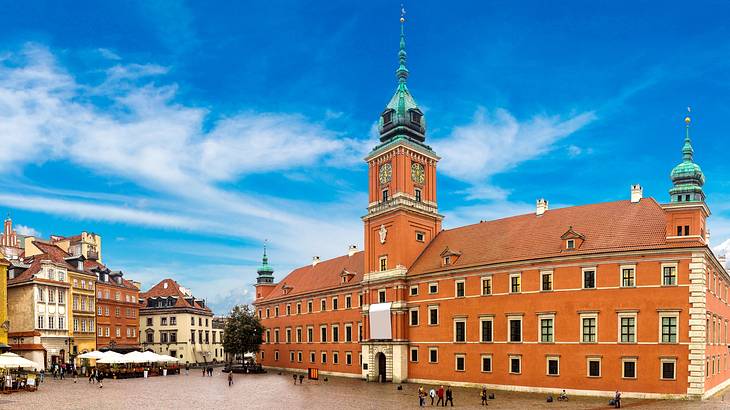
The Royal Castle in Warsaw
The Royal Castle in Warsaw is one of the most renowned historical places in Poland. As the name suggests, the castle is located in the capital city of Warsaw and was initially completed in 1619 as a royal residence for Polish monarchs. The castle has also been the site of historical events, like the drafting of the Constitution of 3 May 1791.
Unfortunately, the building was damaged during WWII; however, it was reconstructed after the war and officially completed in 1984. Today, it is a UNESCO World Heritage Site and houses a museum.
☂️ Discover the Royal Castle in Warsaw on a tour
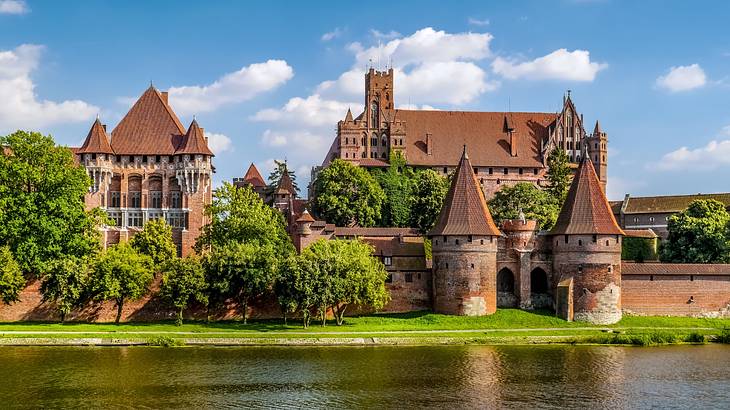
Malbork Castle
Constructed in the 13th century, Malbork Castle is a Teutonic castle located in Malbork near Gdansk. The castle was unfortunately almost completely destroyed during World War II but has since been restored and is now a museum. During a visit, you can take a tour to admire the architecture and learn more about the site's rich history.
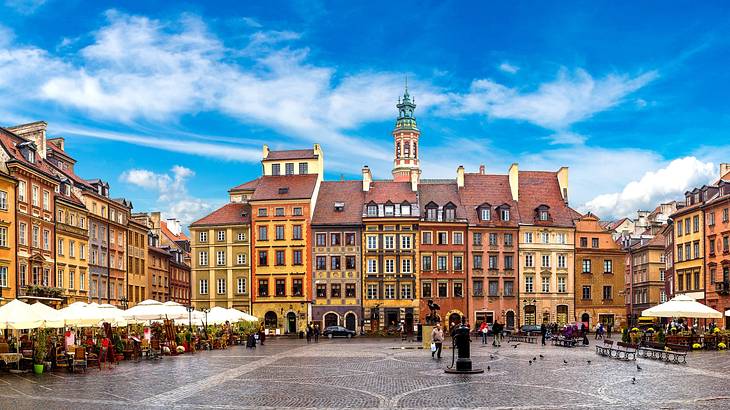
Warsaw Old Town
When in Poland's capital city, you must plan a trip to Warsaw Old Town! This ancient part of the city features cobblestone streets and medieval buildings. Unfortunately, many of these buildings are reconstructions of the originals that were fully or partially destroyed during the Second World War.
Landmarks to see in the area include the Royal Palace and the Museum of Warsaw. When exploring this UNESCO World Heritage Site, you will also find some trendy eateries and concerts are hosted in the summer.
☂️ Join a tour to see the Warsaw Old Town
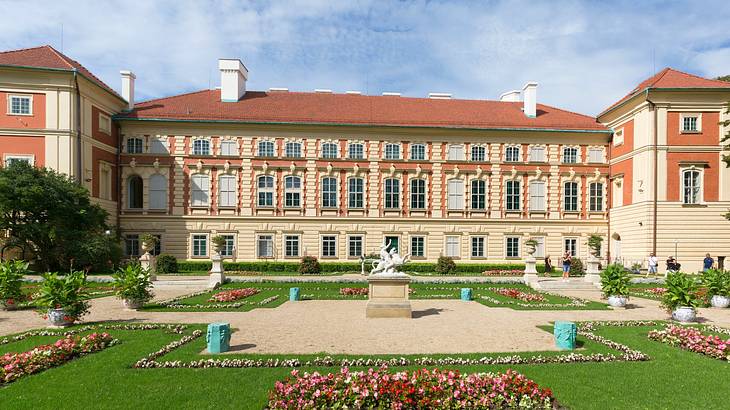
Łańcut Castle
The Baroque style Łańcut Castle was constructed between 1629 and 1642. It features multiple buildings and stunning grounds and was home to various prominent families, including the Lubomirski family and Potocki family.
In 2005, the castle was named a Polish National Historic Monument, and it is open to visitors who can tour the castle complex and gardens.
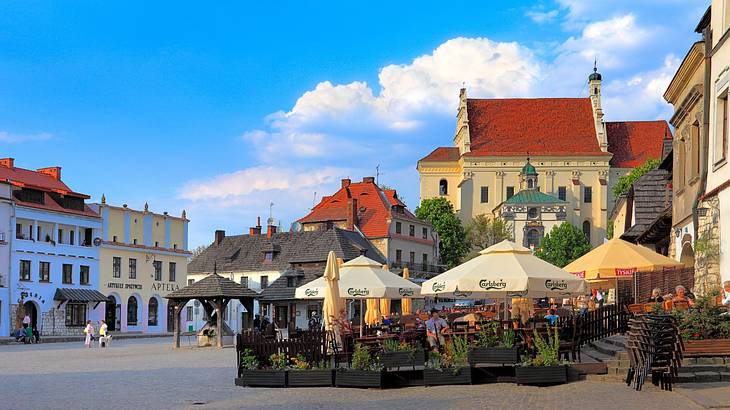
Kazimierz
Kazimierz is Krakow's historic Jewish quarter, which features galleries, independent and vintage shops, and trendy bars and eateries. This area, which was its own city until the 19th century, dates to the 1300s.
The district is named after King Casimir III of Poland and was home to a large Jewish population for centuries. Sadly, many of Kazimierz's residents were killed during WWII.
After the war, the area was rebuilt, and new businesses opened. Today, it is not only a fascinating place to explore but also one of the best-preserved Jewish areas in the country.
☂️ Explore Kazimierz on a tour
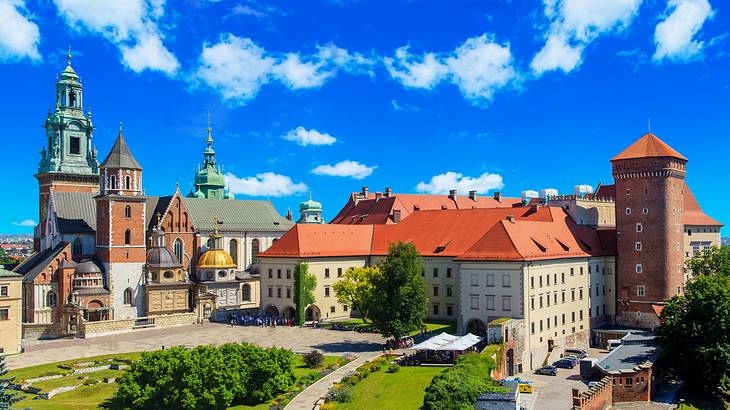
Wawel Royal Castle
Wawel Royal Castle is another of the historical landmarks in Poland related to Polish royalty. This castle was constructed between the 13th and 14th centuries and features multiple architectural styles, including Romanesque, Renaissance, Gothic, and Baroque.
The building now houses the John Paul II Wawel Cathedral Museum, which features Polish artefacts, including many royal items like a replica of the Polish Crown Jewels.
☂️ Visit the Wawel Royal Castle with an experience
Famous Landmarks of Poland
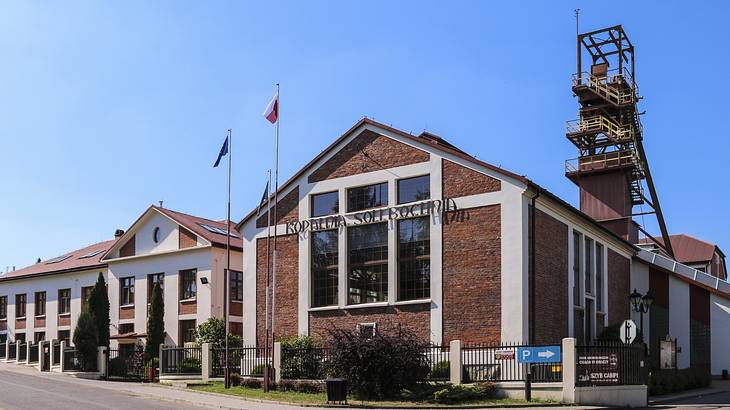
Bochnia Salt Mine
Another interesting landmark is the Bochnia Salt Mine or Kopalnia Soli Bochnia in Polish. This salt mine is one of the oldest in the world, having been established in 1248 after the discovery of salt in the area during the 12th century and the start of the 13th century.
It is now an official national historic monument and is open to the public. Visitors can take underground tours and learn more about the site's history.
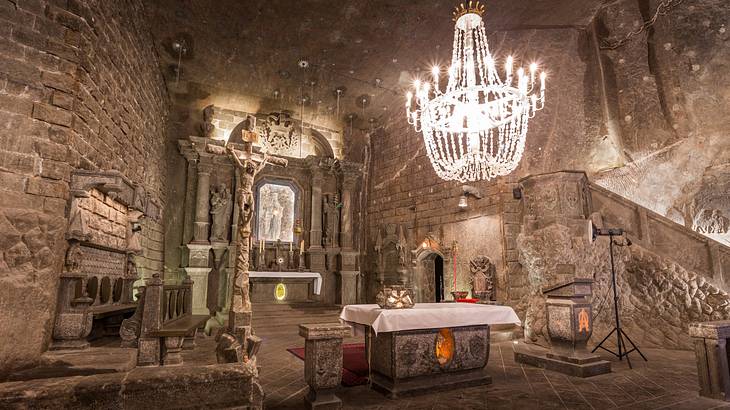
Wieliczka Salt Mine
Wieliczka Salt Mine is another of the country's large salt mines. The mine is located in Wieliczka, close to Krakow, and dates to the 13th century, making it one of the oldest operating salt mines in the world.
However, it no longer operates as a salt mine and is instead a tourist attraction, welcoming about 1.2 million visitors each year. Inside, you can explore the mining areas and see a chapel, complete with stunning chandeliers.
☂️ Explore the Wieliczka Salt Mine on a tour
Museum of Warsaw
If you want to learn more about the history of Warsaw, you must visit is the Museum of Warsaw. Opened in 1936, the museum in the Old Town Market Place in Warsaw covers the capital city's history.
Exhibits cover significant events and the different populations that have called the area home. You can also see around 70,000 artefacts across the museum, which cover 11 townhouse buildings.
☂️ Join a tour to see the Museum of Warsaw
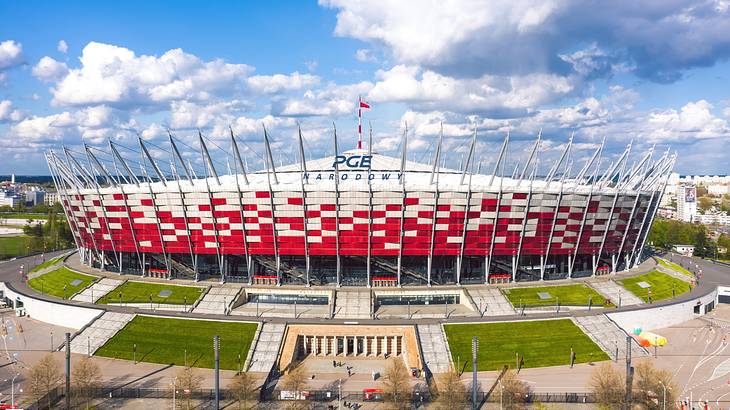
Kazimierz Górski National Stadium
Kazimierz Górski National Stadium, also known as Stadion Narodowy im. Kazimierza Górskiego or PGE Narodowy is the largest football arena in Poland. Opened in 2012 in Warsaw, the stadium has a capacity of 58,580 for football matches (56,826 for UEFA games) and 72,900 for concerts.
It is notably the home ground of the Polish national football team and has hosted UEFA Euro and FIFA World Cup qualification games, as well as being one of the hosts for the UEFA Euros in 2012.
☂️ Visit PGE Narodowy with a tour
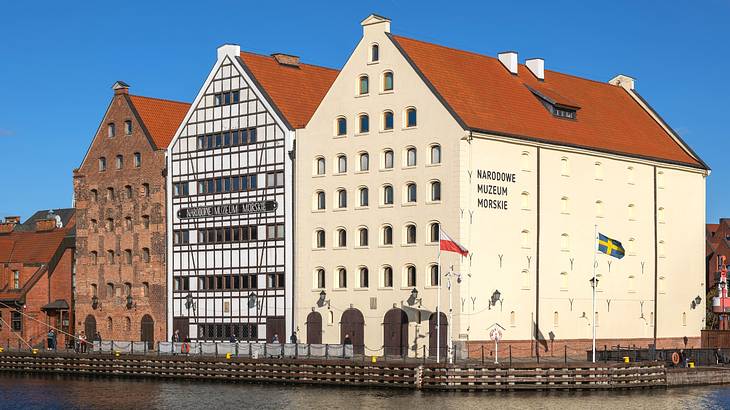
National Maritime Museum
The National Maritime Museum is another fascinating Polish museum. Located in Gdańsk, the museum was founded in the 1960s and is dedicated to the country's maritime history.
Visitors can learn more about ship transportation, international maritime trade, and those that work on the seas, with exhibitions covering the last few hundred years.
Skyfall Warsaw
Skyfall Warsaw in the Warsaw UNIT is another viewing platform in the city. However, this is unlike any other viewing platform in Poland or Europe. Visitors will step inside a glass box with a falling floor to take in the most stunning views of Warsaw.
The experience gives the sensation of floating above the city! After going on the viewing deck, you can enjoy more views with a drink at the Skyfall bar.
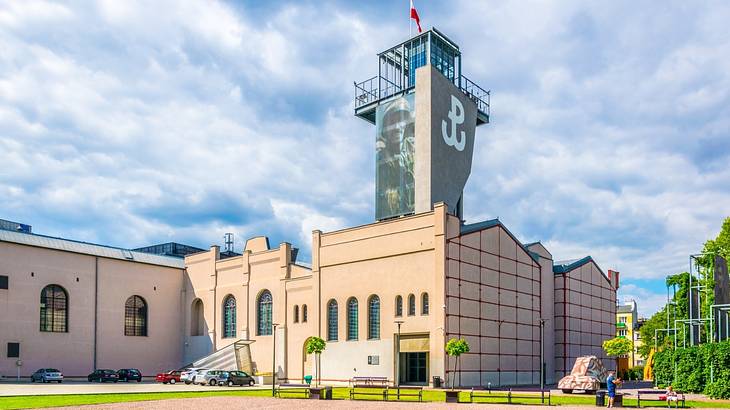
The Warsaw Uprising Museum
Another of numerous museums covering important topics in Poland is The Warsaw Uprising Museum. Founded in 1983, work to complete the museum took 21 years, finally opening in 2004.
Exhibits relate to the 1944 Warsaw Uprising when the Polish Underground Resistance undertook a major effort to retake Warsaw from the Germans. You can also see many artefacts, including a full-size B-24 Liberator.
Famous Monuments in Poland
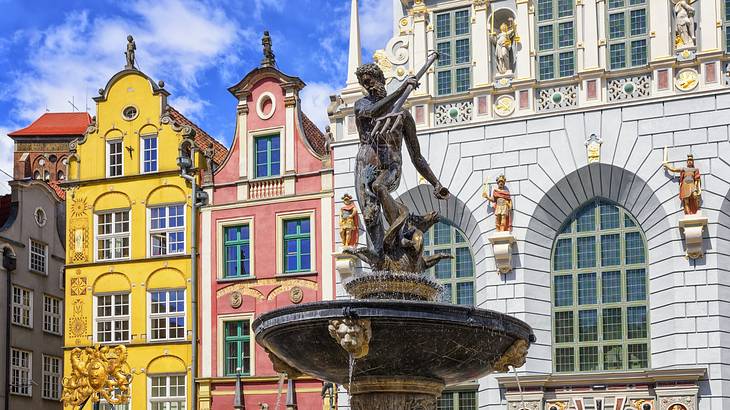
Neptune's Fountain
Located in the port city of Gdańsk, Neptune's Fountain is a renowned Rococo sculpture and one of the city's most well-known features. The fountain was constructed at the start of the 1600s, finally opening in 1633.
It features a statue of the Roman god of the sea, Neptune, and some other sculptures like lion heads. Seeing Neptune's Fountain is one of the things to do in Gdańsk that has to be on your itinerary.
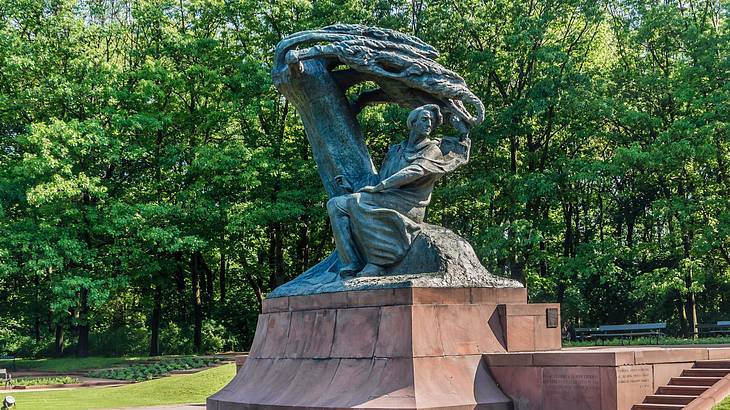
Chopin Monument
The Chopin Monument, located in Warsaw, was opened in 1926. As the name suggests, it is dedicated to world-renowned Polish composer Frederic Chopin. The statue was designed around 20 years before it was unveiled in 1907 by Polish sculptor Wacław Szymanowski.
Like many points of interest in Poland, the statue was destroyed in WWII. Fortunately, it was reconstructed for everyone to enjoy today. You can even see piano recitals of Chopin's compositions on Sundays in the summer.
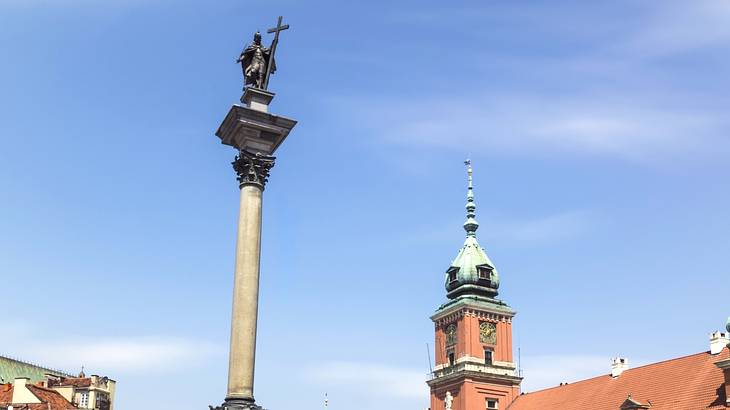
Sigismund's Column
Another of the famous landmarks in Warsaw is Sigismund's Column. You can see the monument in Castle Square, where it has sat since 1644.
This column is dedicated to Sigismund III Vasa, a former king of Poland. Interestingly, the monument was one of the first secular column monuments to be constructed since the Middle Ages.
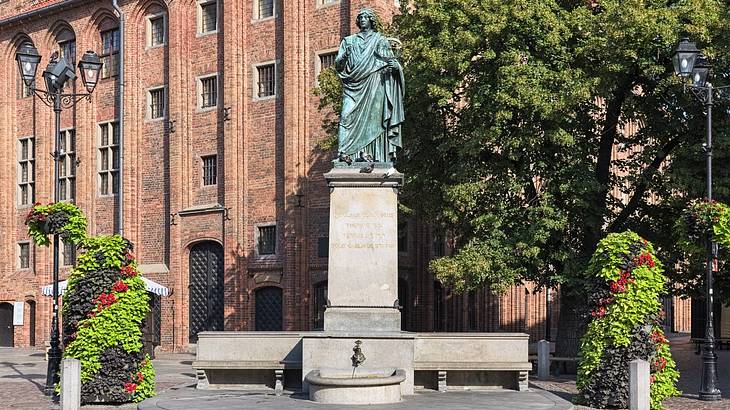
Nicolas Copernicus Monument
Situated in Warsaw, the Nicolas Copernicus Monument, or Nicolaus Copernicus Monument, is one of the most famous Polish monuments.
The statue sits in front of Staszic Palace and was completed in 1830. It features a bronze sculpture of the Polish Renaissance astronomer Nicolaus Copernicus and was designed by Bertel Thorvaldsen a Danish sculptor.
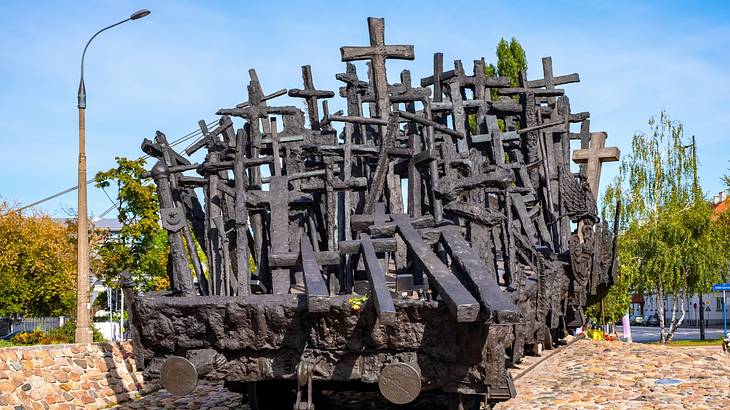
Monument to the Fallen and Murdered in the East
Opened in 1995, the Monument to the Fallen and Murdered in the East is a significant landmark in Warsaw. It honours the victims of the 1939 Soviet invasion of Poland at the start of World War II and other Polish victims of the war.
This monument features religious symbols, like crosses, on a railway flatcar on a track. Each of the track's sleepers features names of the places the victims were taken from and taken to. An annual memorial service is also held in front of the monument on September 17, the first day of the invasion.
Natural Landmarks in Poland
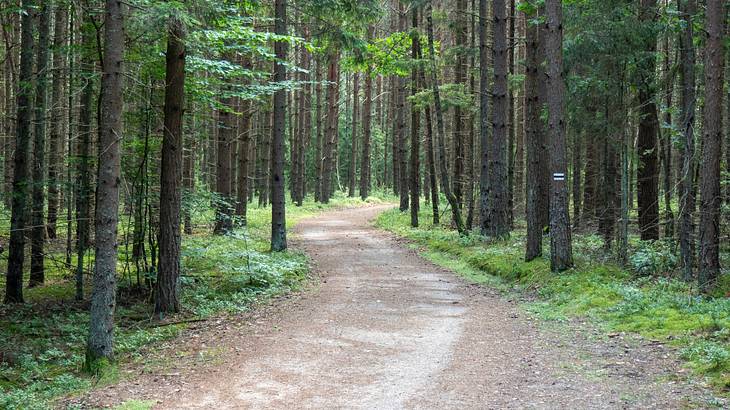
Białowieża Forest
Białowieża Forest sits on the border between Poland and Belarus. The park covers 3,086 square kilometres and is one of the largest remaining parts of Europe's primaeval forest.
When in the park, you can marvel at the old-growth forest and see an array of wildlife. The park is notably home to 800 European bison, the heaviest land animal on the continent.
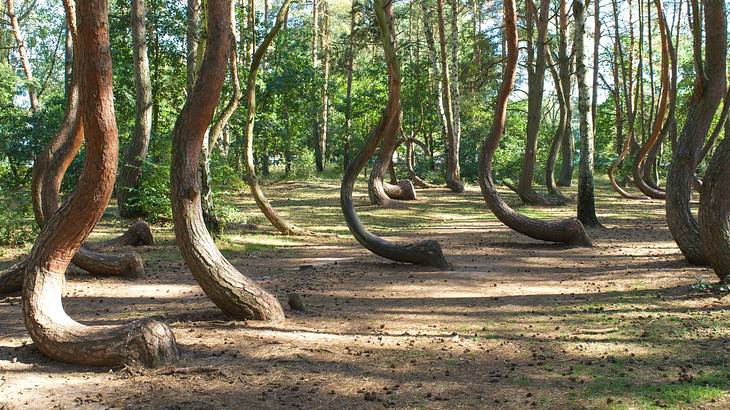
Crooked Forest in Poland
Another famous forest to see is the Crooked Forest in Poland. This natural landmark sits on the edge of the village of Nowe Czarnowo and is known for its many pine trees.
The forest gets its name as these pine trees are oddly shaped compared to standard pines, exhibiting a crookedness. How the trees got this shape remains a mystery, but seeing the unique forest is well worth it!

Tatra National Park
Tatra National Park sits within the Tatra Mountains and is a UNESCO Biosphere Reserve and Ramsar Wetland. This important ecological landmark covers an area of 211.64 square kilometres and includes mountains, caves, lakes, and many other stunning natural features.
The park is also home to an array of flora and fauna, including Swiss pine trees, European beech forests, and animals like red foxes and Eurasian lynx.
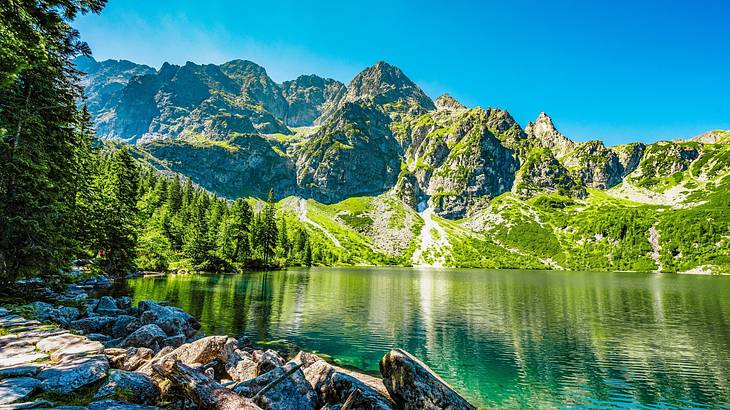
Morskie Oko
Morskie Oko, or Eye of the Sea, is the largest lake within the Tatra Mountains. This famous landmark in Poland is also the fourth deepest lake within the mountains, and it has been named one of the most beautiful lakes in the world by the Wall Street Journal.
Visiting this scenic lake is a must if in the area, and it is arguably the most popular tourist attraction in the Tatras, welcoming approximately 50,000 visitors during peak season.
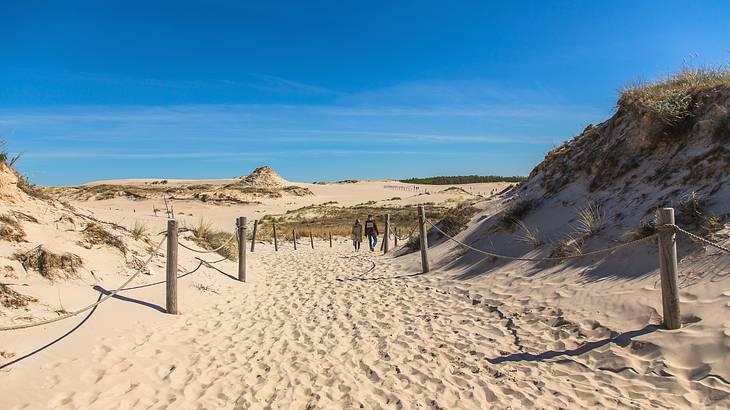
Słowiński National Park
Situated on Poland's Baltic coast, Słowiński National Park features vast sand dunes that change in shape and size throughout the day due to changing winds.
Along with walking around the scenic coastal park, you can visit a museum in the nearby town of Smołdzino to learn more about Słowiński National Park's unique ecosystem.
In Conclusion
Poland is a fascinating destination with numerous landmarks to see. No matter what part of the country you head to, you'll discover natural, cultural, and historical places to visit that will make your trip highly memorable!
Want to keep exploring?
Subscribe for discounts on tickets and hotels and our latest guides.
Thank you for subscribing
We will be in touch soon with discounts on tickets and hotels and our latest guides.
Want to keep exploring?
Subscribe for discounts on tickets and hotels and our latest guides.
Thank you for subscribing
We will be in touch soon with discounts on tickets and hotels and our latest guides.

